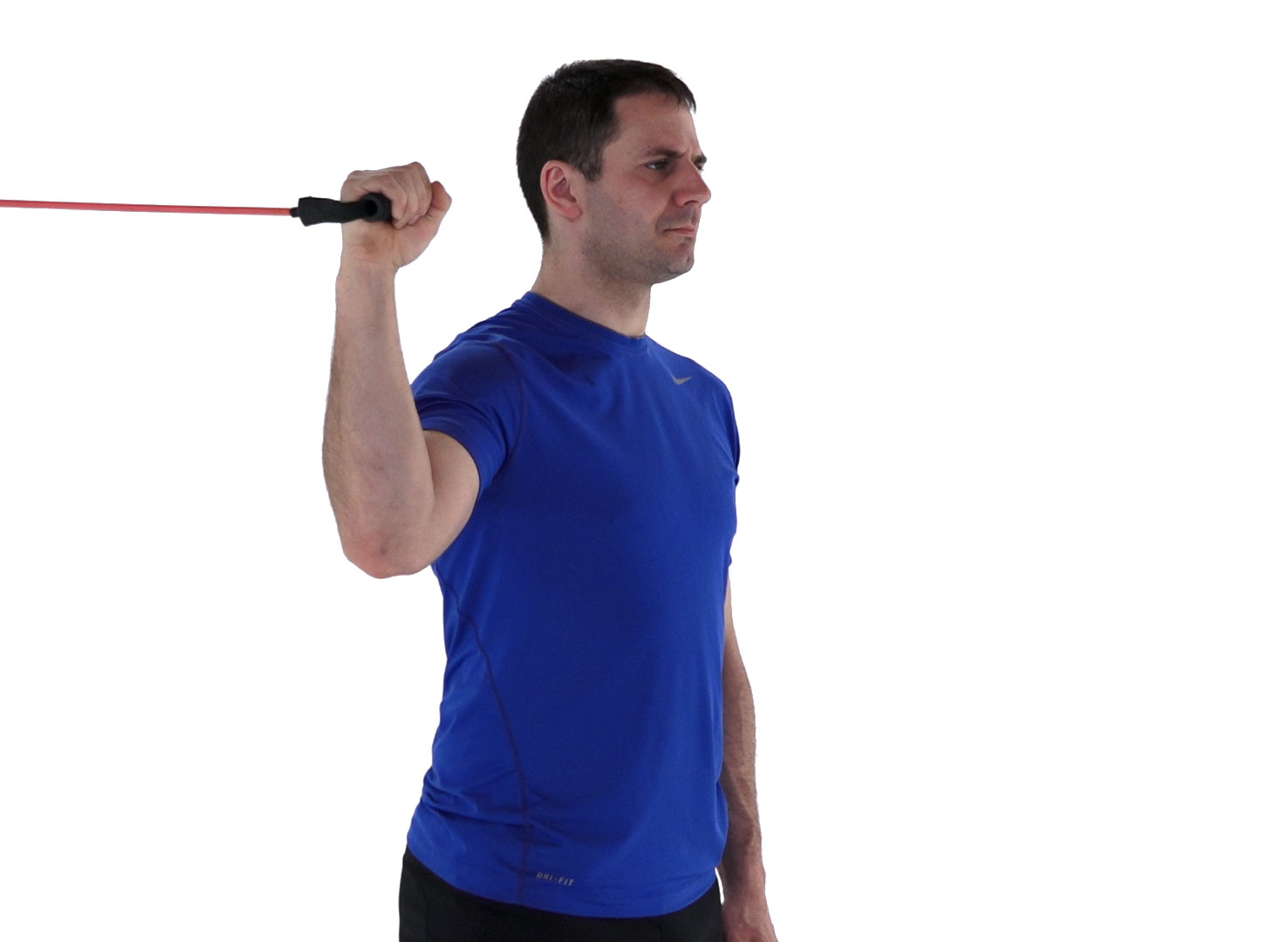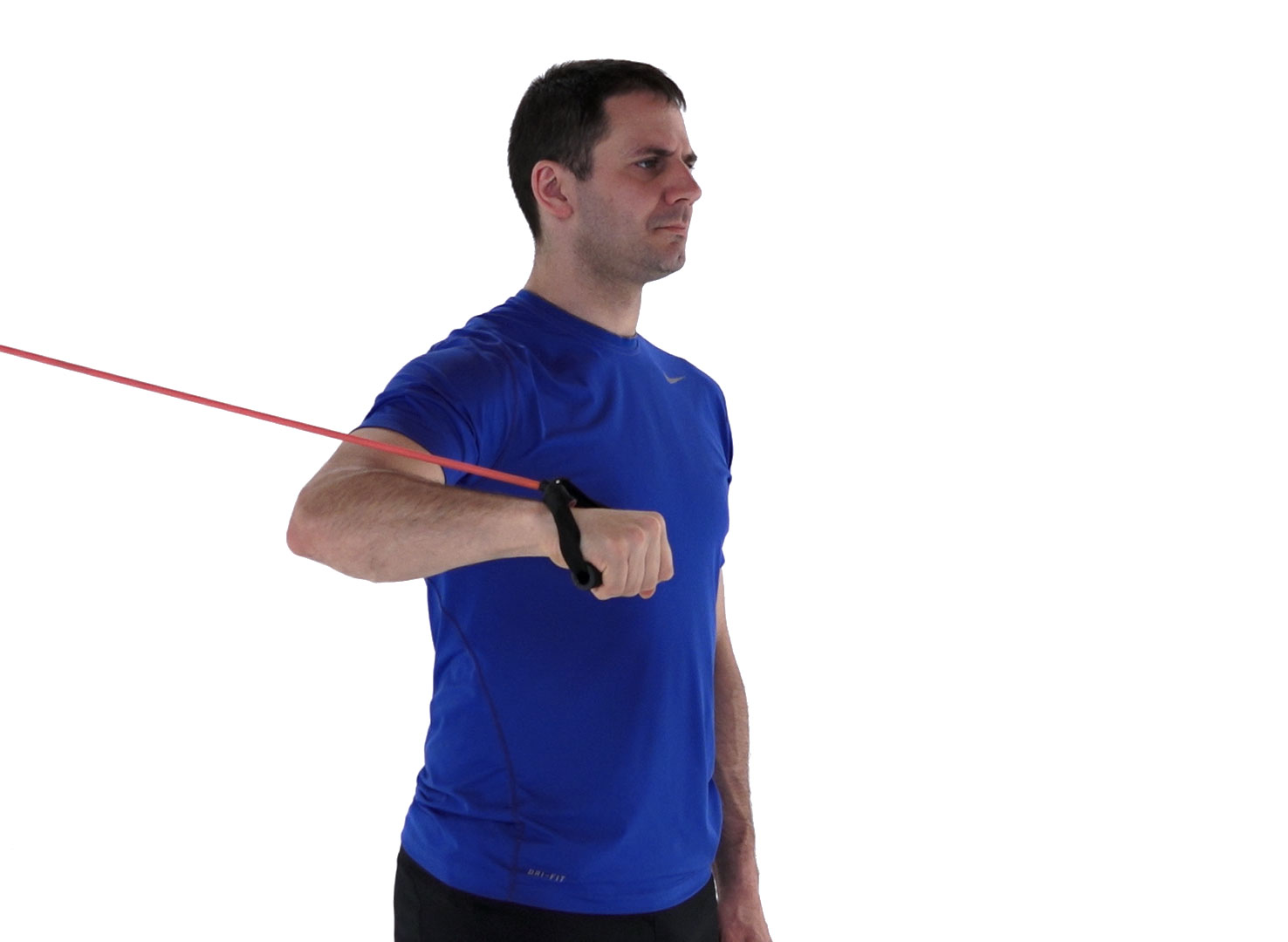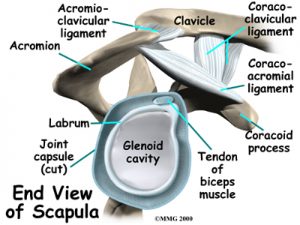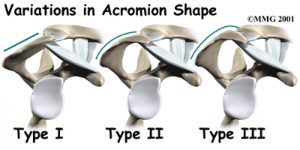Shoulder Impingement
The shoulder is a very complex piece of machinery. Its elegant design gives the shoulder joint great range of motion, but not much stability. As long as all the parts are in good working order, the shoulder can move freely and painlessly.
Many people refer to any pain in the shoulder as bursitis. The term bursitis really only means that the part of the shoulder called the bursa is inflamed. Tendonitis is when a tendon gets inflamed. This can be another source of pain in the shoulder. Many different problems can cause inflammation of the bursa or tendons. Impingement syndrome is one of those problems. Impingement syndrome occurs when the rotator cuff tendons rub against the roof of the shoulder, the acromion.
Anatomy

The shoulder is made up of three bones: the scapula (shoulder blade), the humerus (upper arm bone), and the clavicle (collarbone).The rotator cuff connects the humerus to the scapula. The rotator cuff is formed by the tendons of four muscles: the supraspinatus, infraspinatus, teres minor, and subscapularis.
Tendons attach muscles to bones. Muscles move the bones by pulling on the tendons. The rotator cuff helps raise and rotate the arm.
As the arm is raised, the rotator cuff also keeps the humerus tightly in the socket of the scapula,

the glenoid. The upper part of the scapula that makes up the roof of the shoulder is called the acromion.
A bursa is located between the acromion and the rotator cuff tendons. A bursa is a lubricated sac of tissue that cuts down on the friction between two moving parts. Bursae are located all over the body where tissues must rub against each other. In this case, the bursa protects the acromion and the rotator cuff from grinding against each other.
Causes
Usually, there is enough room between the acromion and the rotator cuff so that the tendons slide easily underneath the acromion as the arm is raised. But each time you raise your arm, there is a bit of rubbing or pinching on the tendons and the bursa. This rubbing or pinching action is called impingement.

Impingement occuss to some degree in everyone’s shoulder. Day-to-day activities that involve using the arm above shoulder level cause some impingement. Usually it doesn’t lead to any prolonged pain. But continuously working with the arms raised overhead, repeated throwing activities, or other repetitive actions of the shoulder can cause impingement to become a problem. Impingement becomes a problem when it causes irritation or damage to the rotator cuff tendons.
Raising the arm tends to force the humerus against the edge of the acromion. With overuse, this can cause irritation and swelling of the bursa. If any other condition decreases the amount of space between the acromion and the rotator cuff tendons, the impingement may get worse.
Bone spurs can reduce the space available for the bursa and tendons to move under the acromion. Bone spurs are bony points. They are commonly caused by wear and tear of the joint between the collarbone and the scapula, called the acromioclavicular (AC) joint. The AC joint is directly above the bursa and rotator cuff tendons.
In some people, the space is too small because the acromion is oddly sized. In these people, the acromion tilts too far down, reducing the space between it and the rotator cuff.
Symptoms
Impingement syndrome causes generalized shoulder aches in the condition’s early stages. It also causes pain when raising the arm out to the side or in front of the body. Most patients complain that the pain makes it difficult for them to sleep, especially when they roll onto the affected shoulder.
A reliable sign of impingement syndrome is a sharp pain when you try to reach into your back pocket. As the condition worsens, the discomfort increases. The joint may become stiffer. Sometimes a catching sensation is felt when you lower your arm. Weakness and inability to raise the arm may indicate that the rotator cuff tendons are actually torn.
Exersices
Put the band around your wrists with your elbows extended and arms by your side.
Put a minimal amount of pressure into the band and rotate your thumbs 45° out.
Maintaining the pressure, lift your arms all the way overhead.
Do not extend your spine or thrust your chin forward.
Lower the arms to come back to the starting position and repeat.
Ref : www.eorthopod.com
Shoulder Exercises (RCRSP Early stage)
1. Full shoulder flexion (mini-band)
Put the band around your wrists with your elbows extended and arms by your side.
Put a minimal amount of pressure into the band and rotate your thumbs 45° out.
Maintaining the pressure, lift your arms all the way overhead.
Do not extend your spine or thrust your chin forward.
Lower the arms to come back to the starting position and repeat.
Reps 10, Sets 3, Rest 3 min
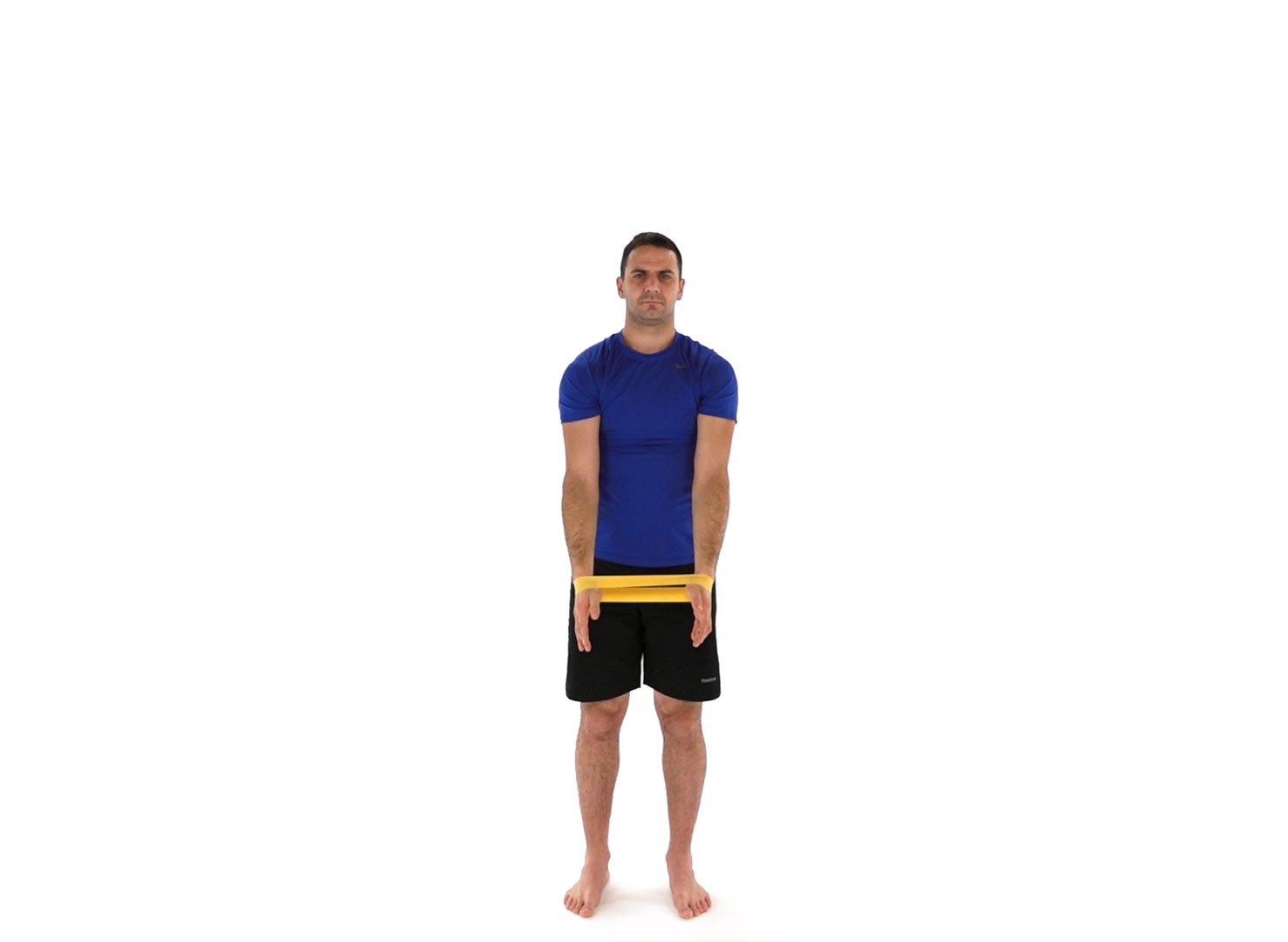
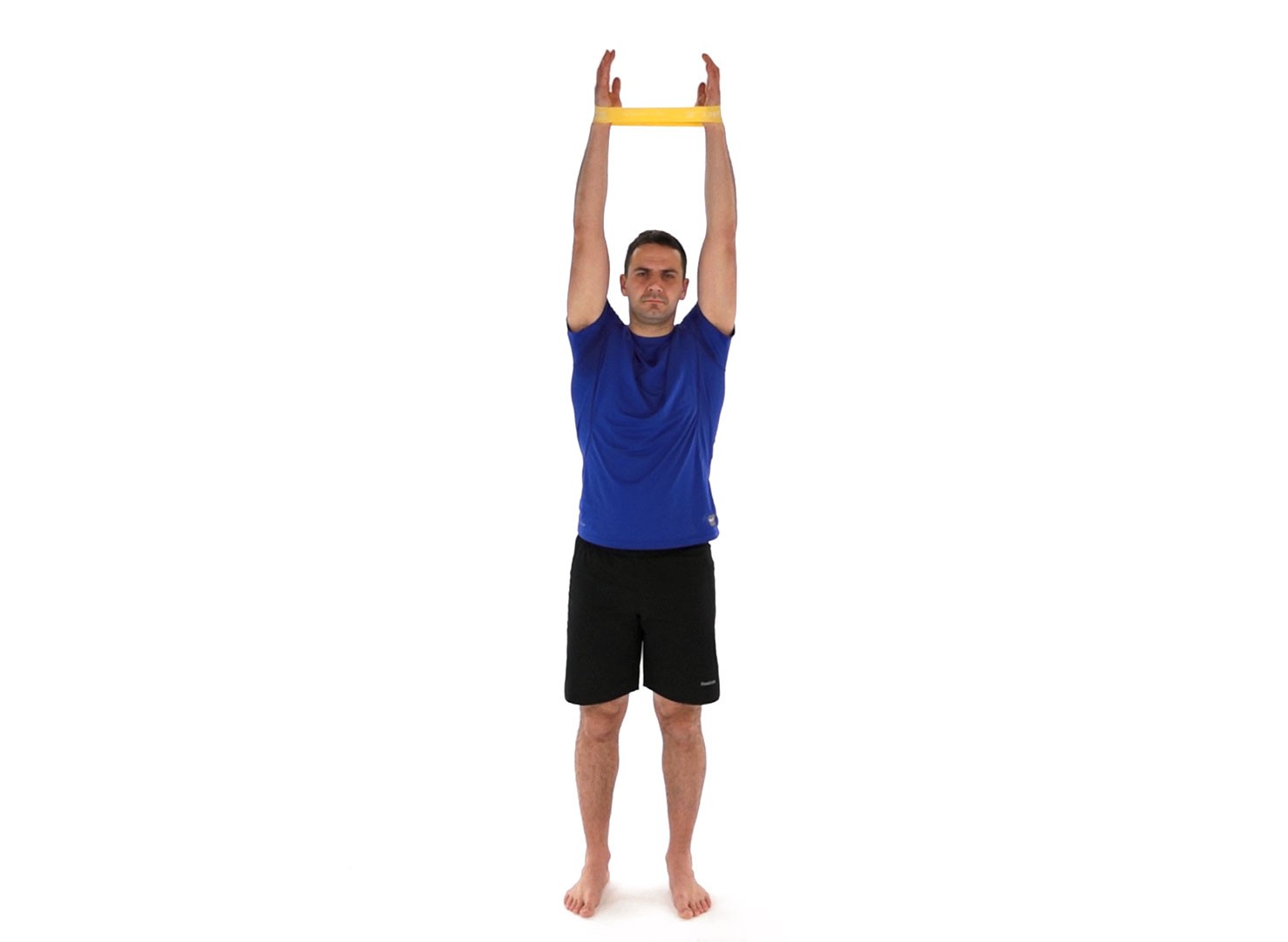
2. Isometrical shoulder abduction (elbow bent)
Stand with the side of your elbow against the wall.
Keep your elbow bent to 90 degrees and your chin tucked in.
Push your elbow against the wall out to the side while keeping your body and head still.
Do not lean on the wall or use your body weight to push.
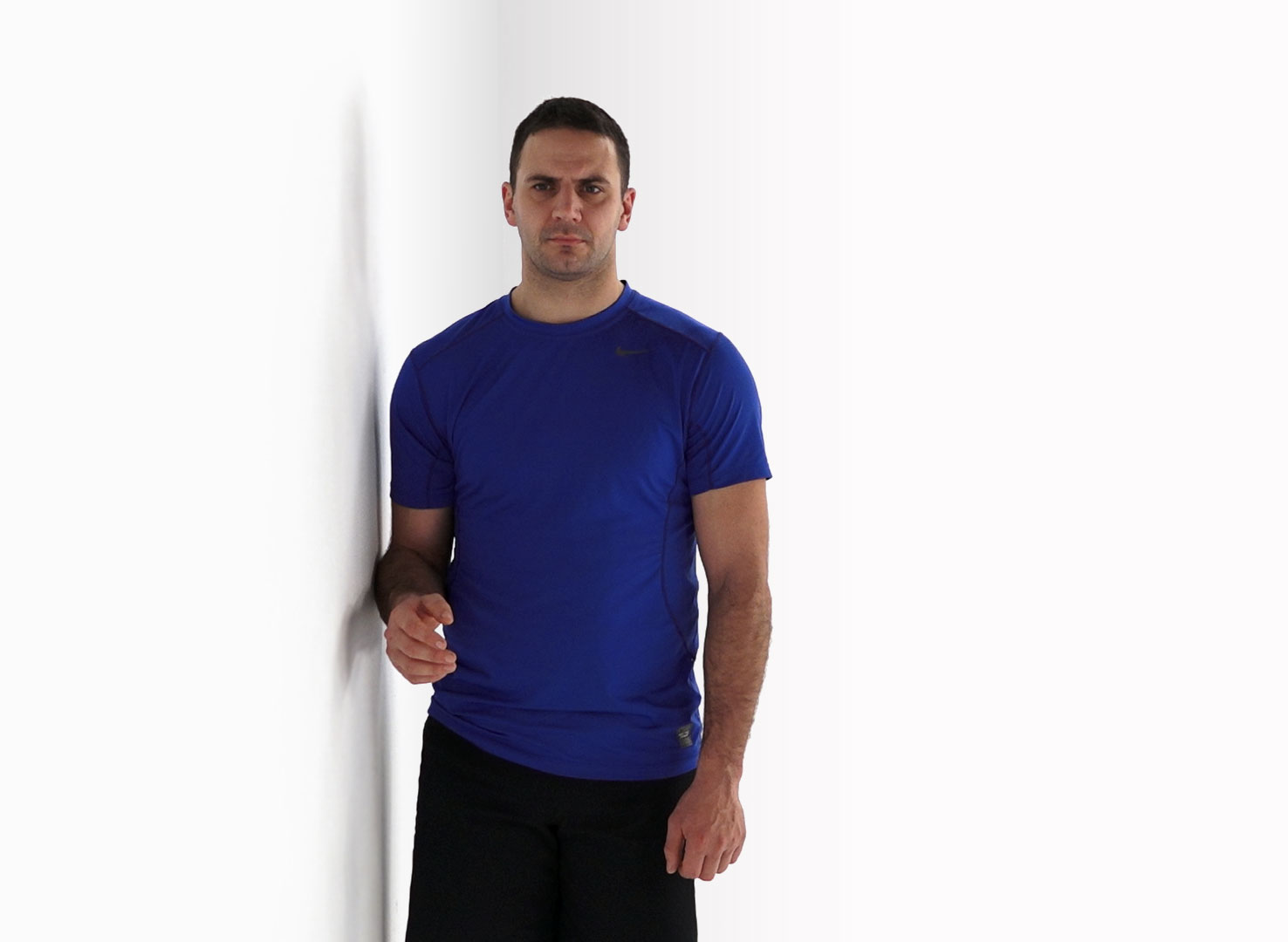
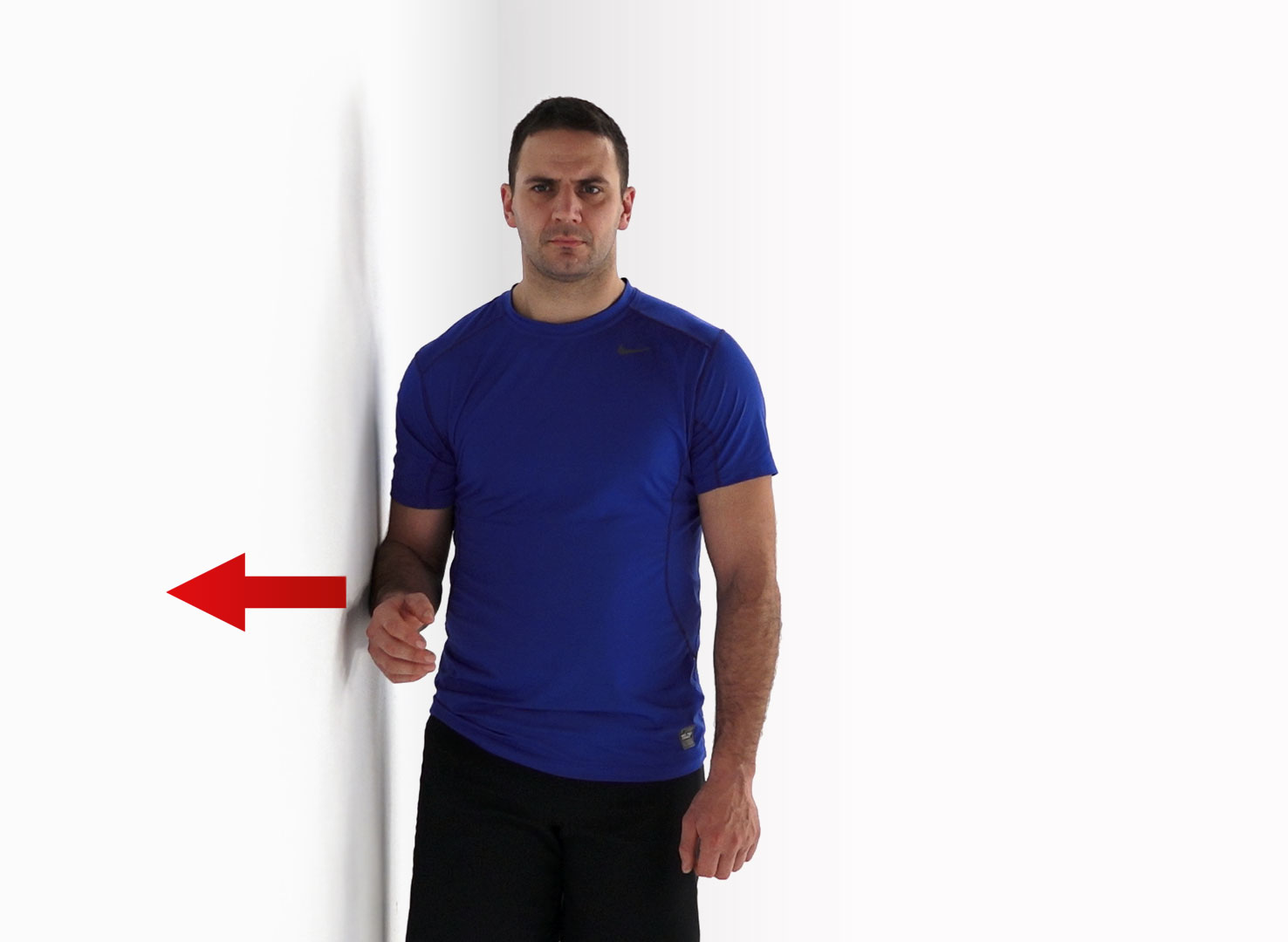
3. Iso. shoulder abduction (arm straight)
Stand with your chin tucked in and your arm straight on the side of your body.
Push your wrist against the wall while keeping your body and head still.
Do not lean on the wall or use your body weight to push.
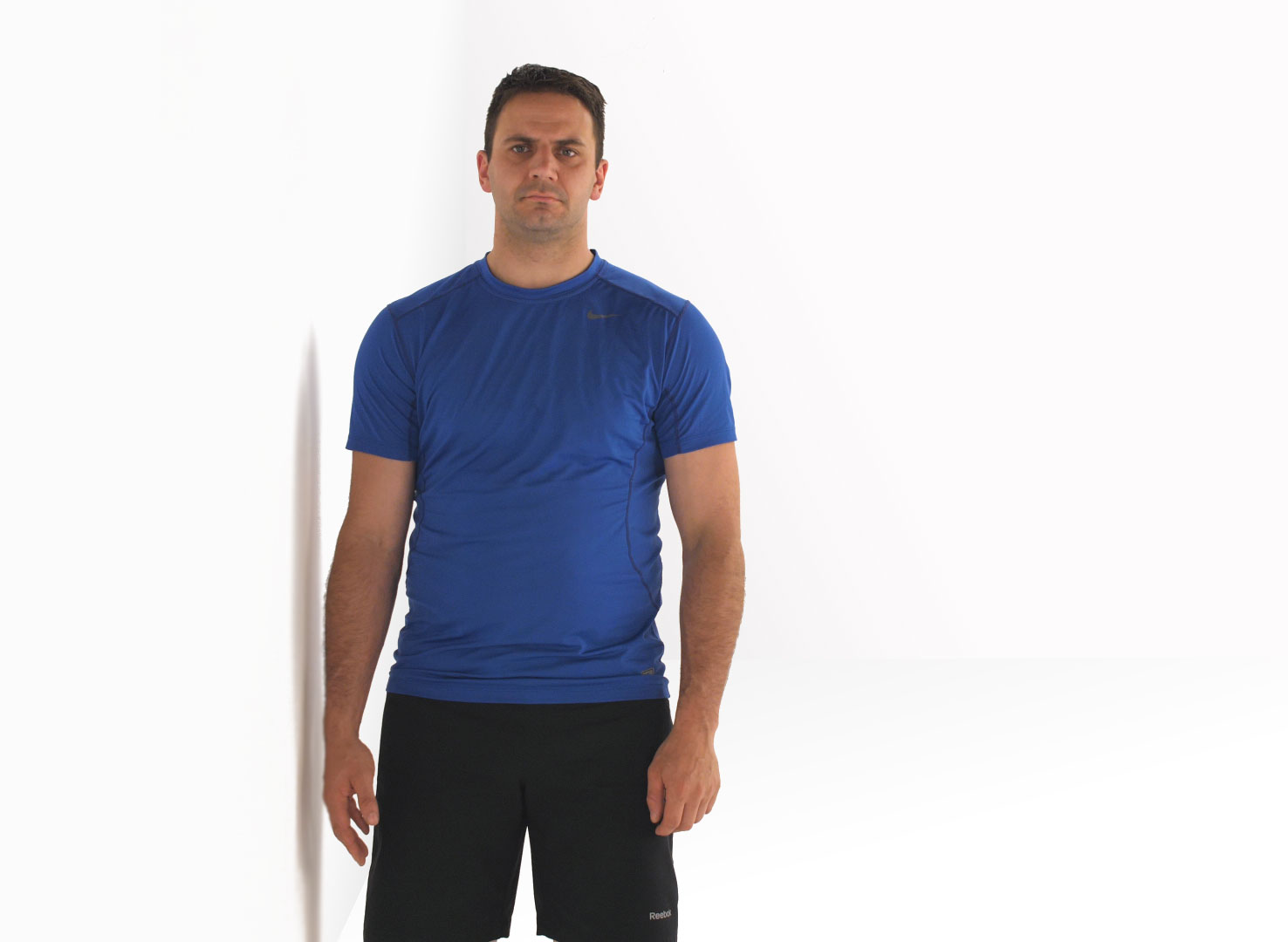
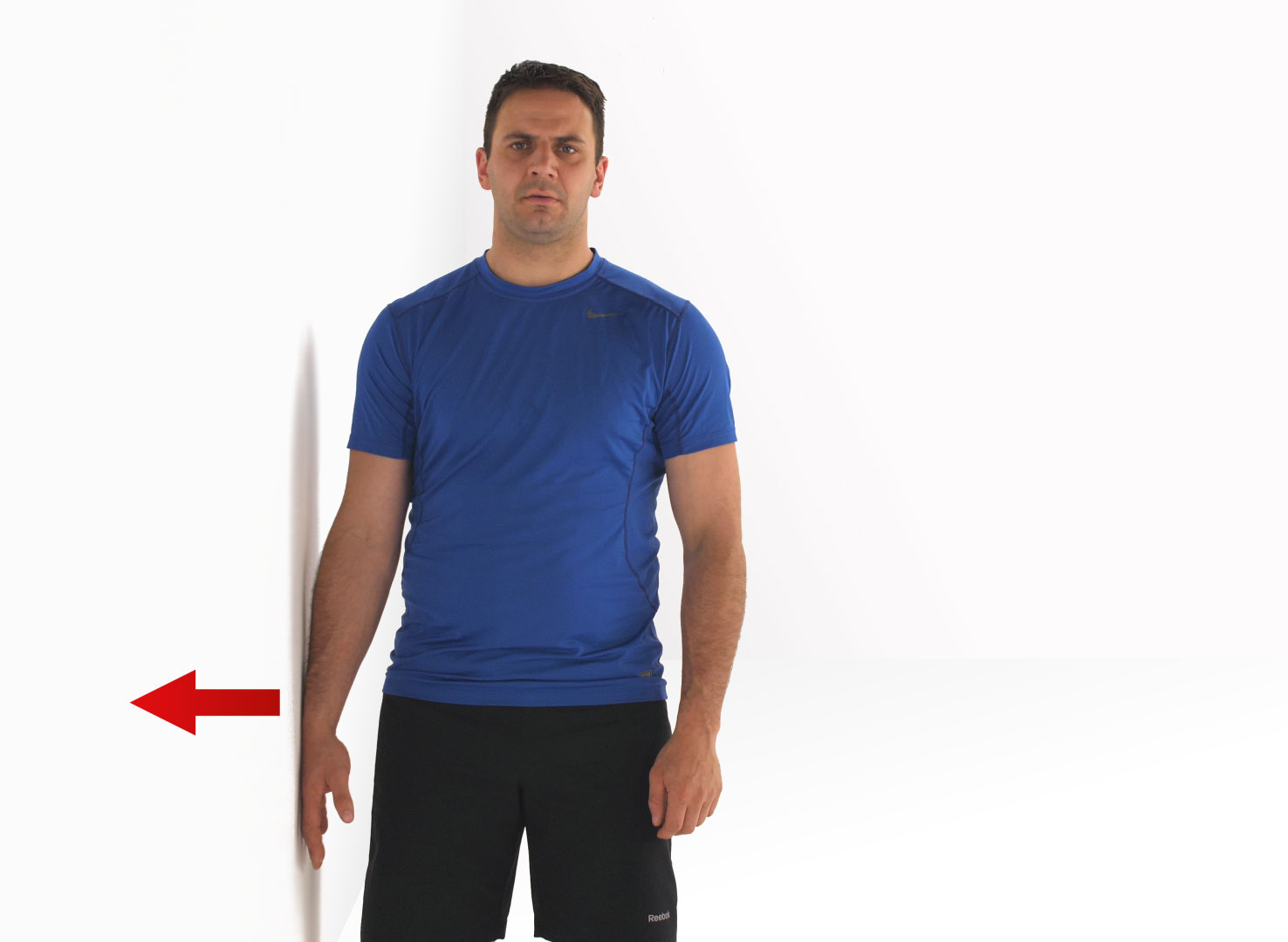
4. Isometric external rotation
Stand beside a wall with the affected arm at your side, your wrist against the wall and your chin tucked in.
Push your wrist outward while keeping your elbow at your side and your head still.
Relax your arm and repeat.
You can use the opposite arm to resist movement at wrist level instead of pushing against the wall.
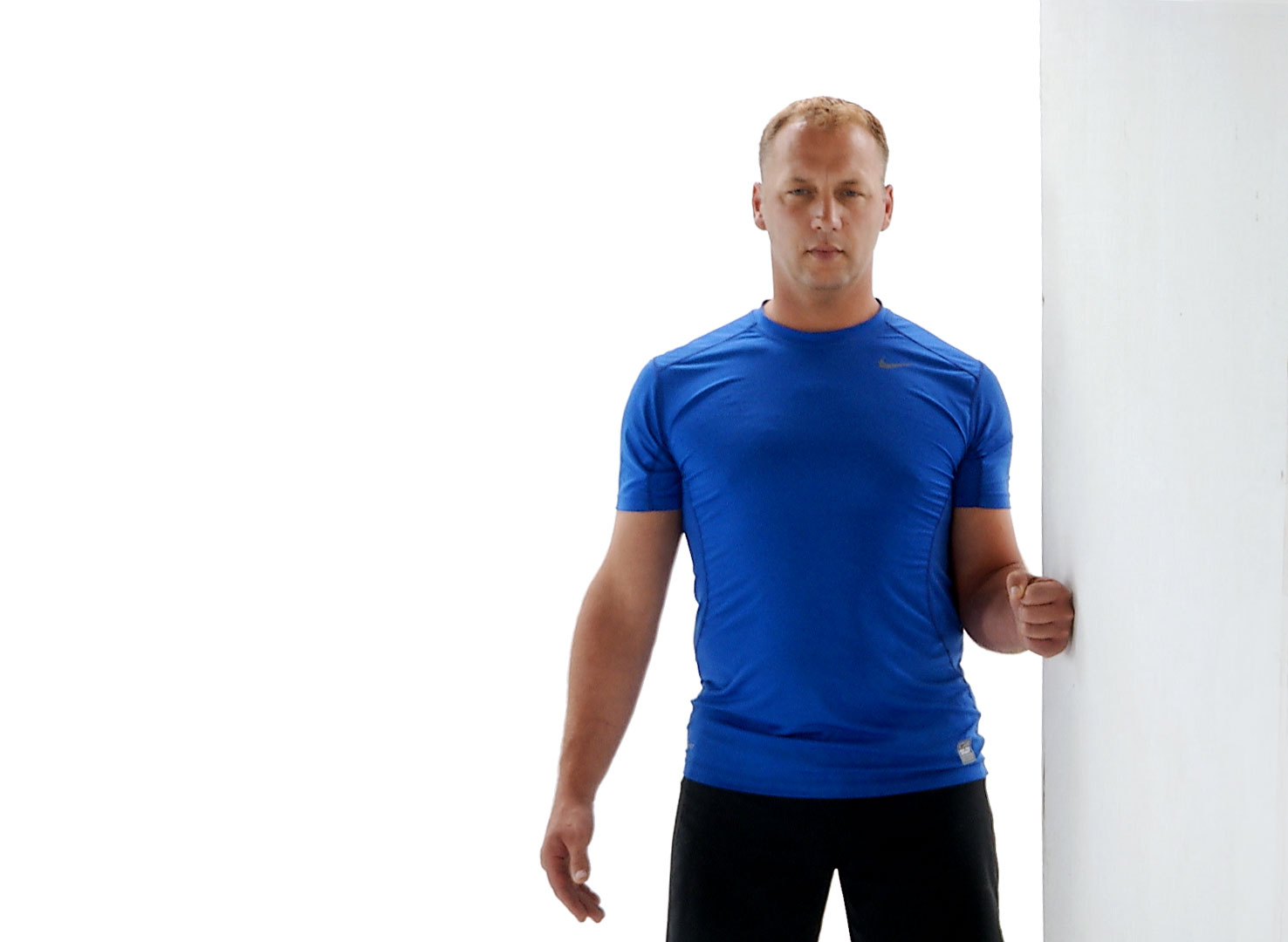
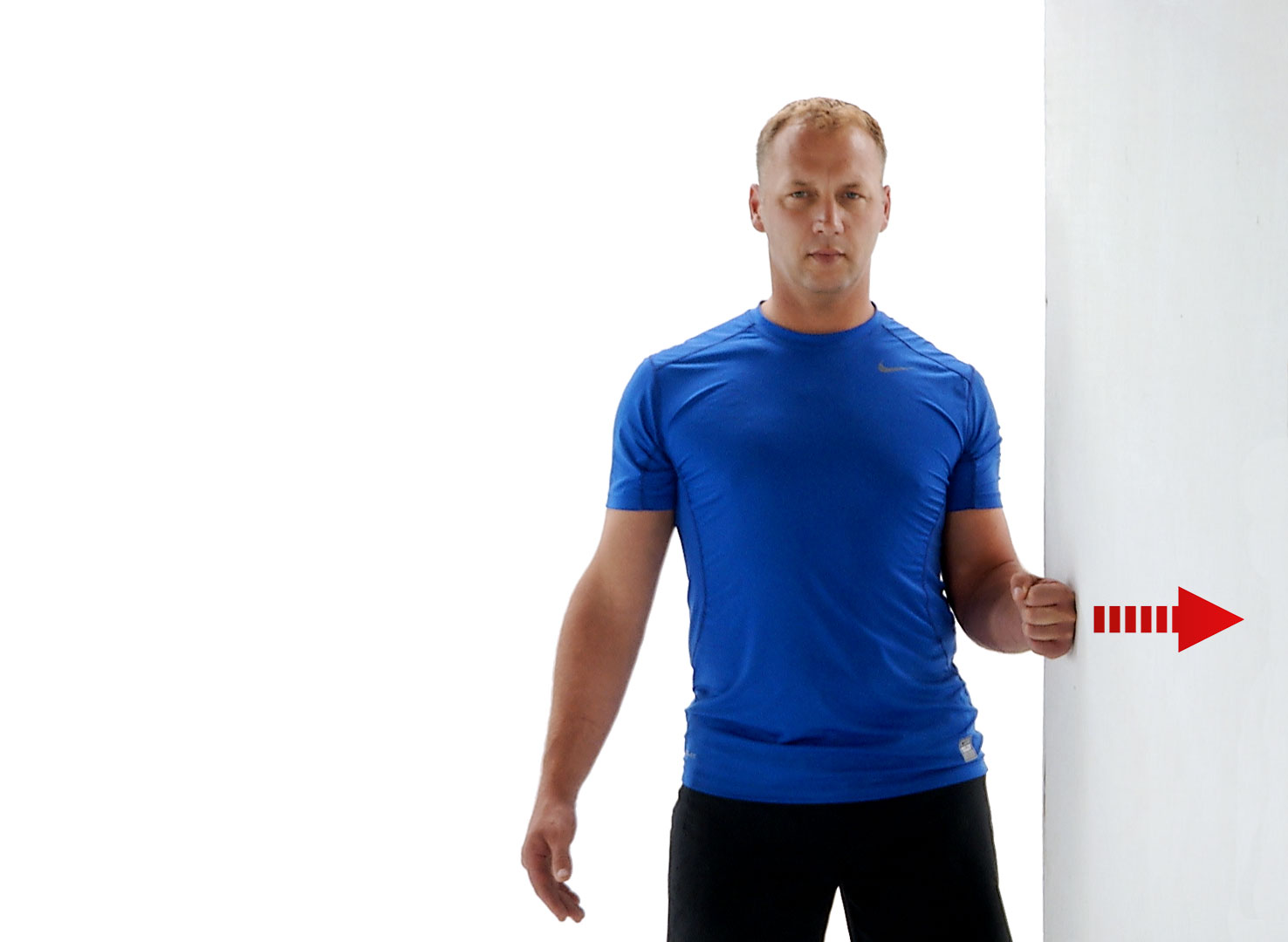
5. Shoulder external iso. rot.
Tuck your elbow in by your side, and bend it to 90 degrees.
Hold the outside of your wrist with your other hand.
Attempt to turn your hand out and away from your body, but resist any actual movement with your other hand.
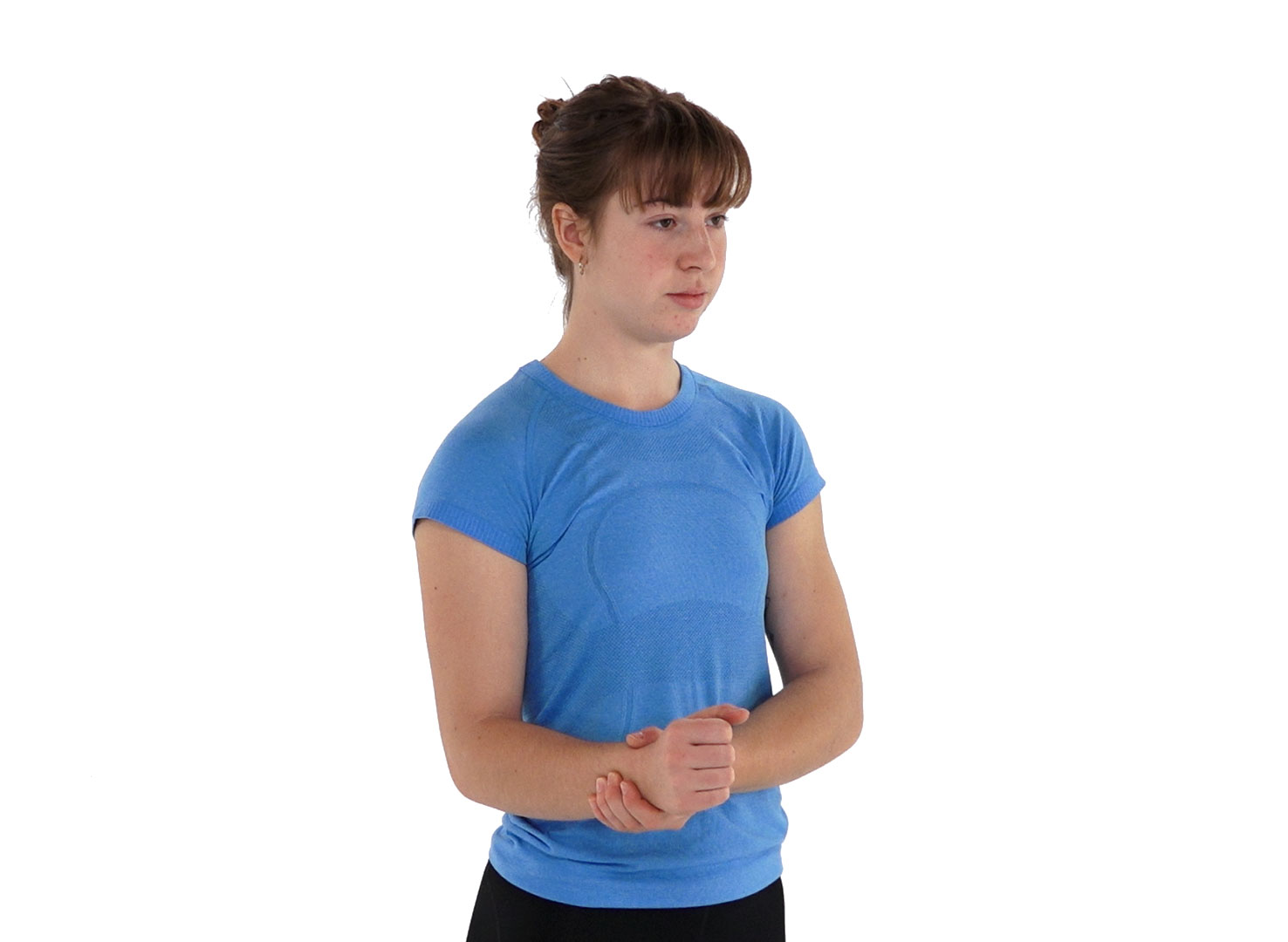
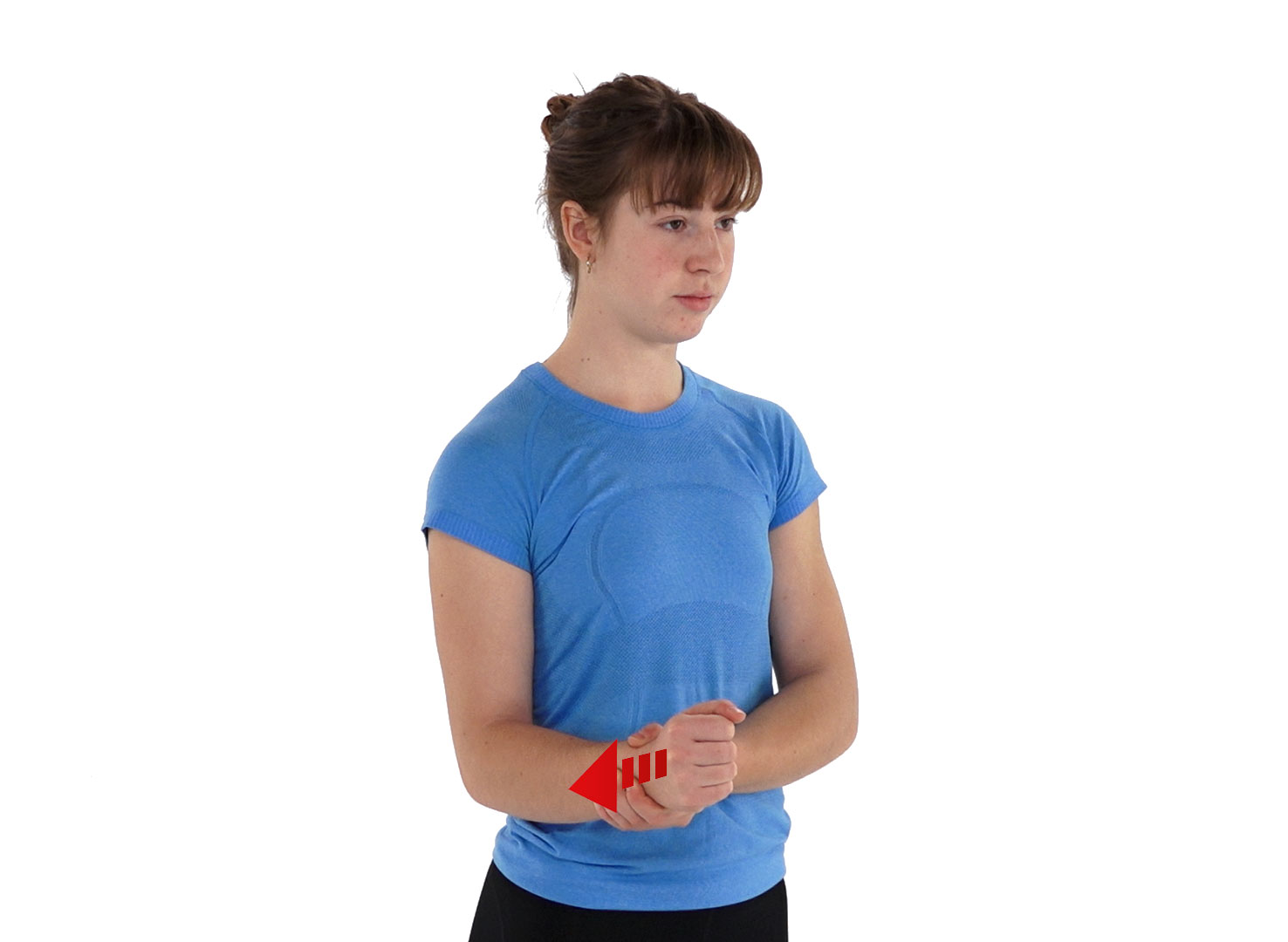
6. Isometric shoulder int. rot.
Stand in a door frame or at the corner of a wall with your chin tucked in.
Bend your elbow at your side and place the palm of your hand against the edge of the wall.
While keeping your head still and your elbow tucked in by your side, push the wall with the palm of your hand as if you want to move it towards your belly.
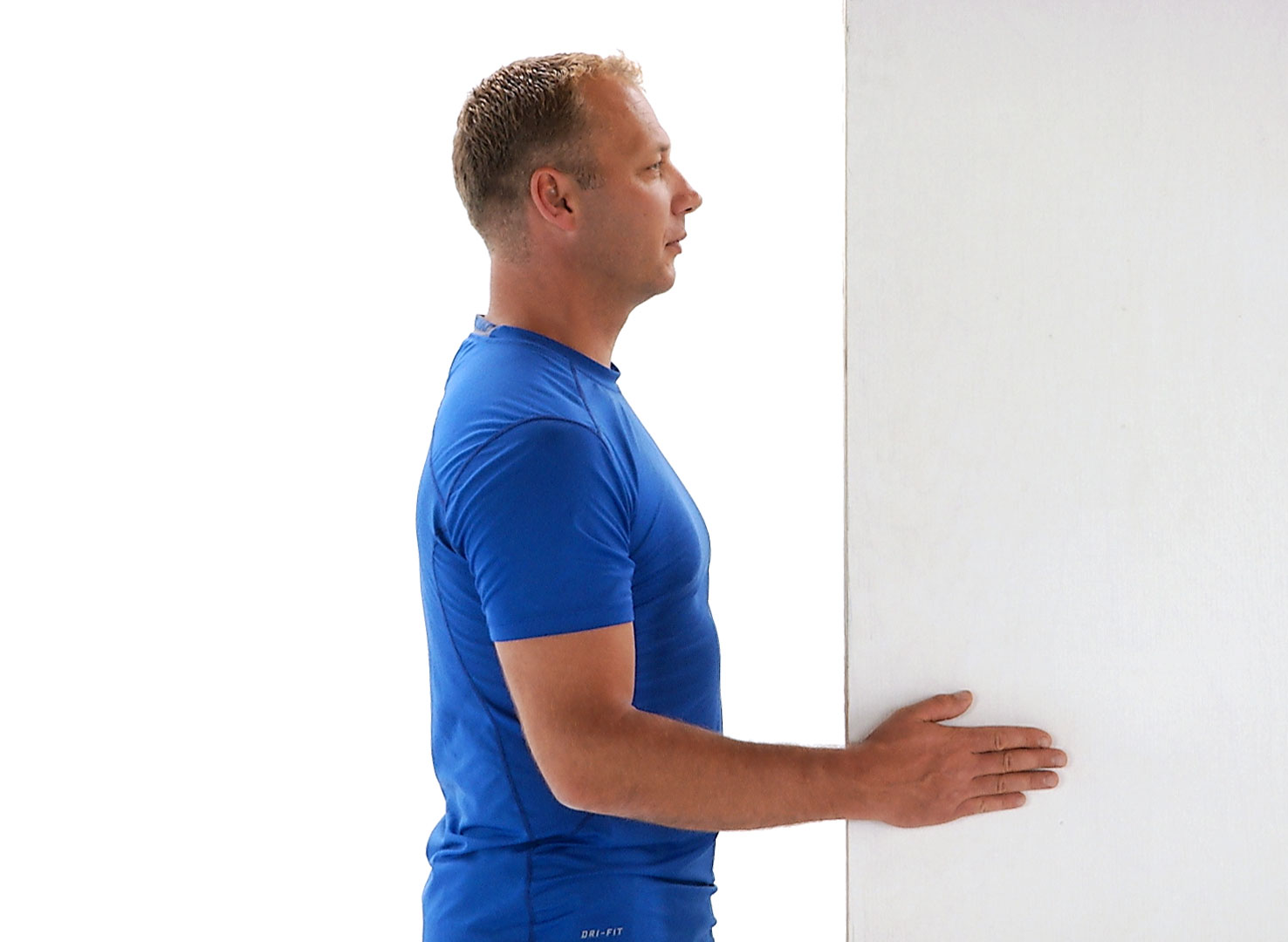
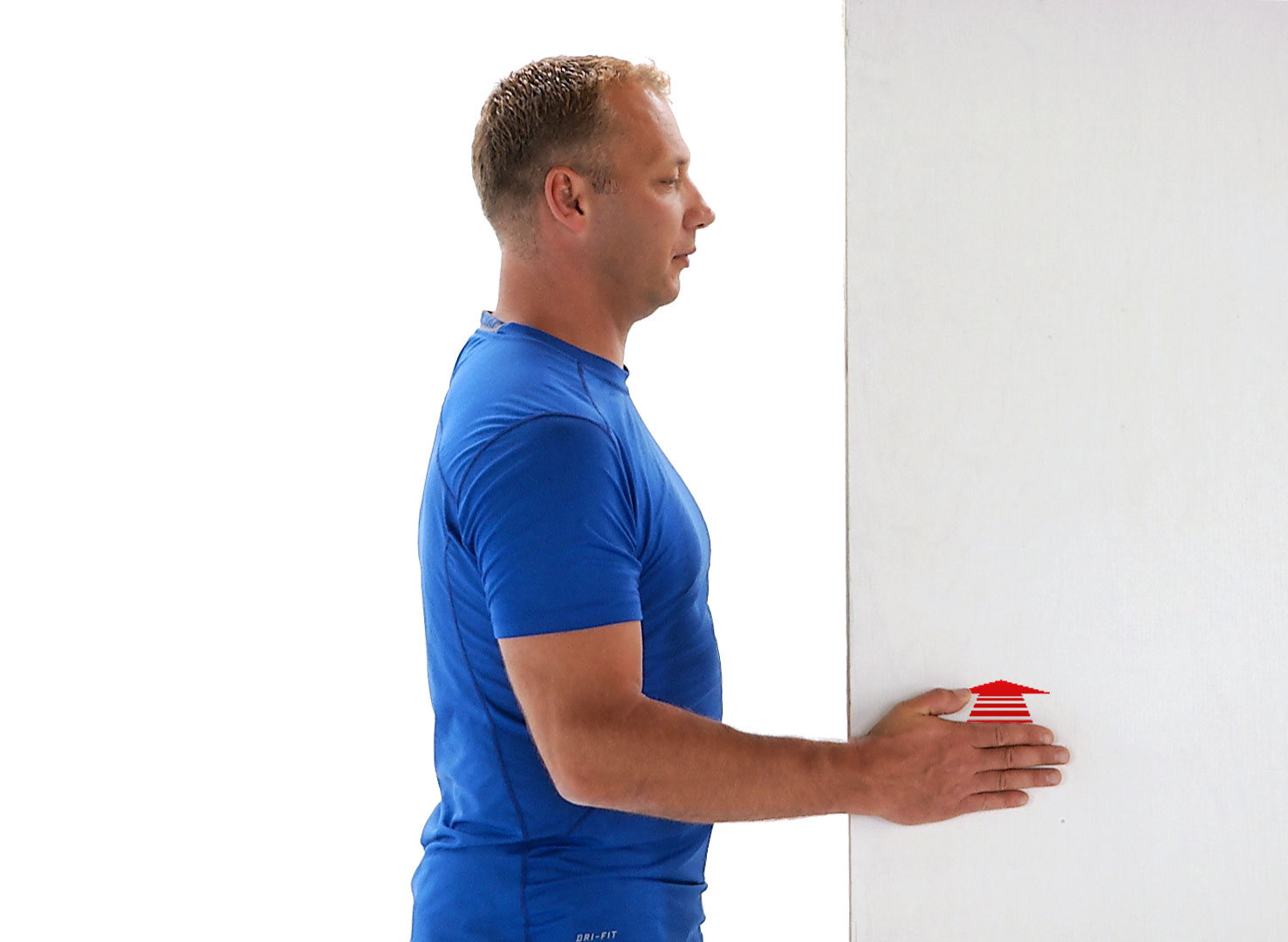
7. Isometric IR
Start with your arm at your side, elbow bent 90°.
Using your free hand to resist the movement, try to internally rotate the working arm by trying to bring your palm toward your stomach.
Make sure your arm stays against your side.
Hold for the recommended time, release and repeat.
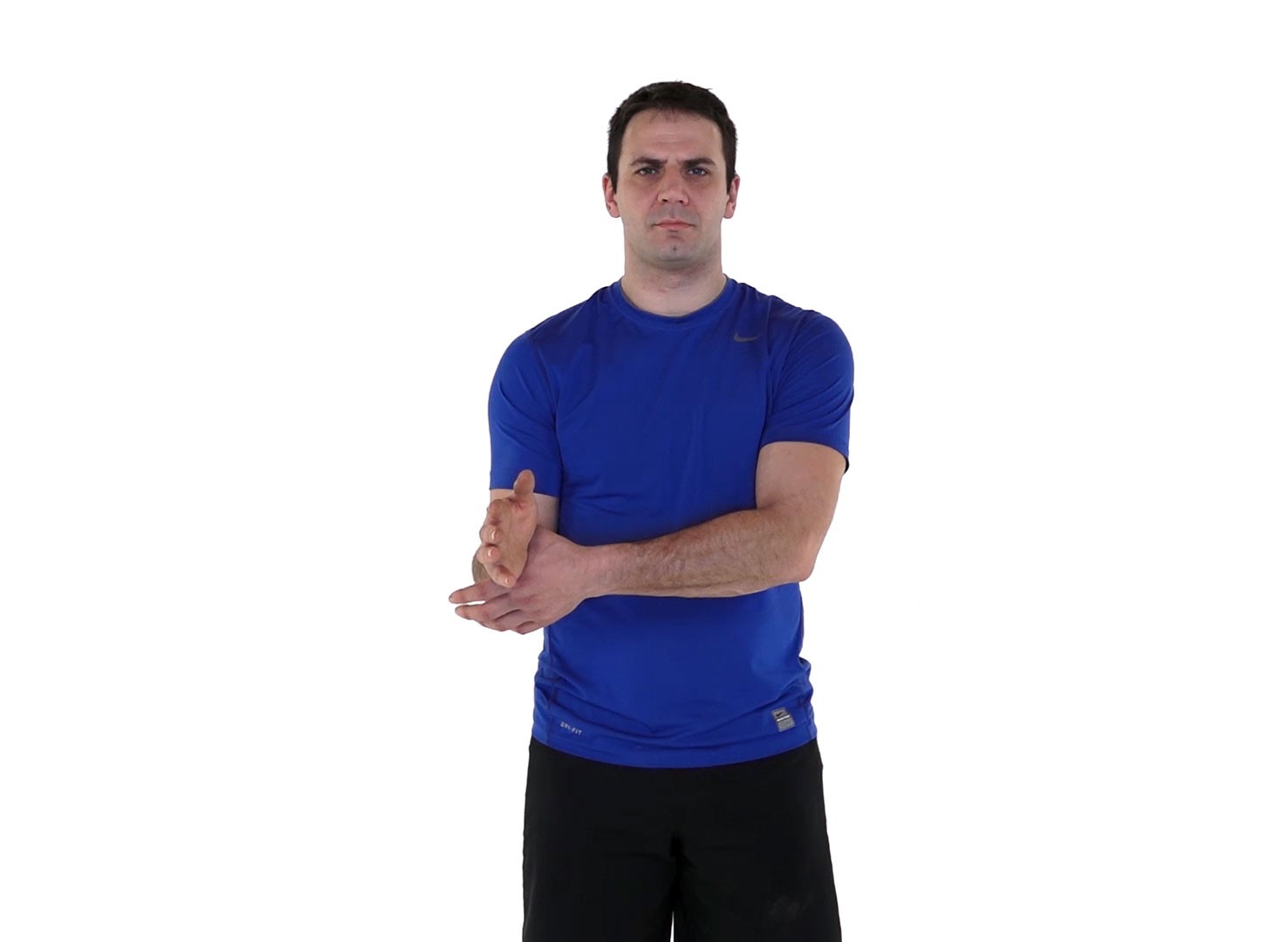
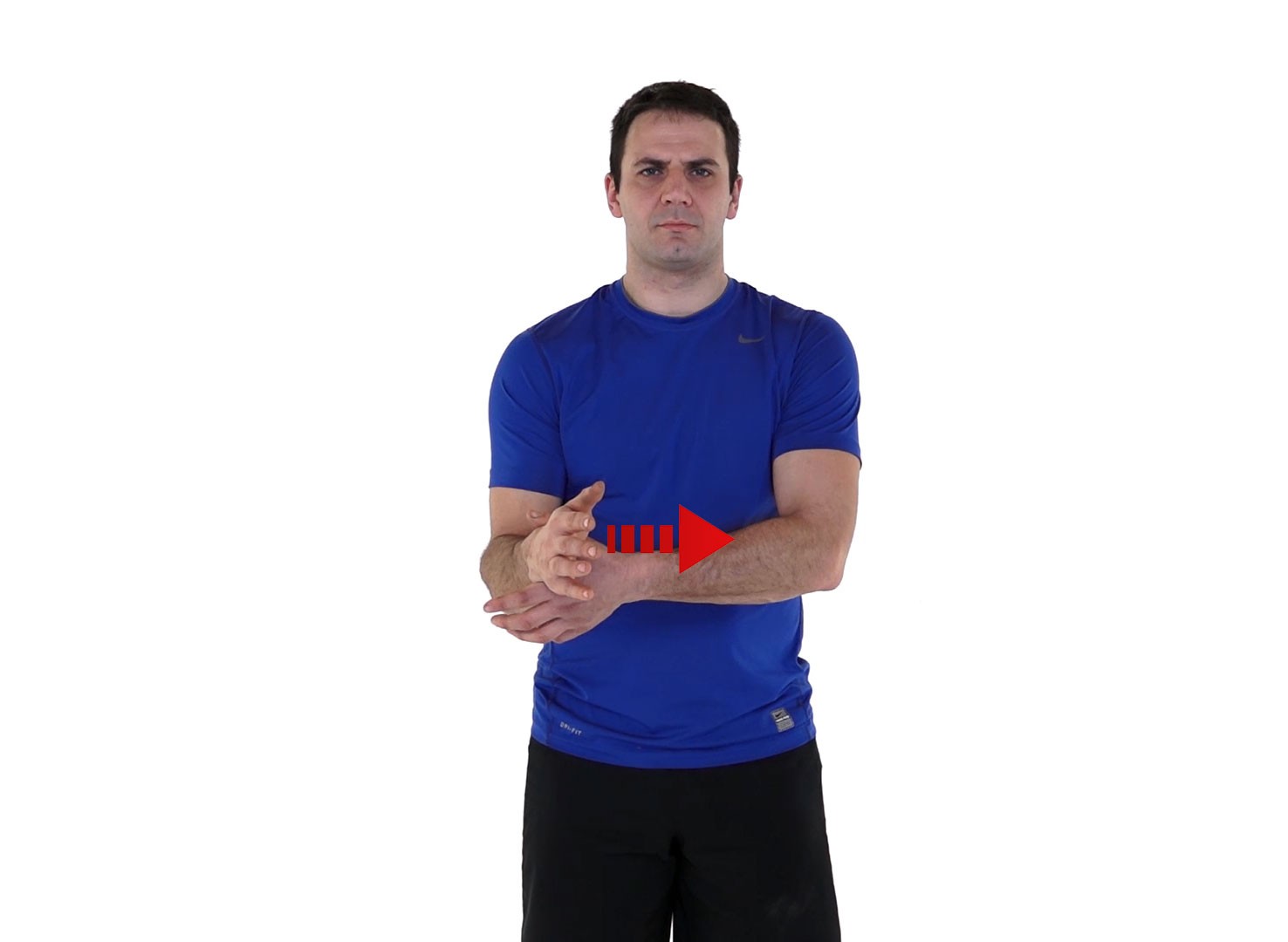
8. Shoulder Pendulum
Stand and bend at the waist, holding a table with the unaffected arm, leaving the affected arm hanging.
Initiate the movement with the body and slowly rotate your arm in a circular motion, progressively getting bigger, as comfort allows.
Repeat in the other direction.
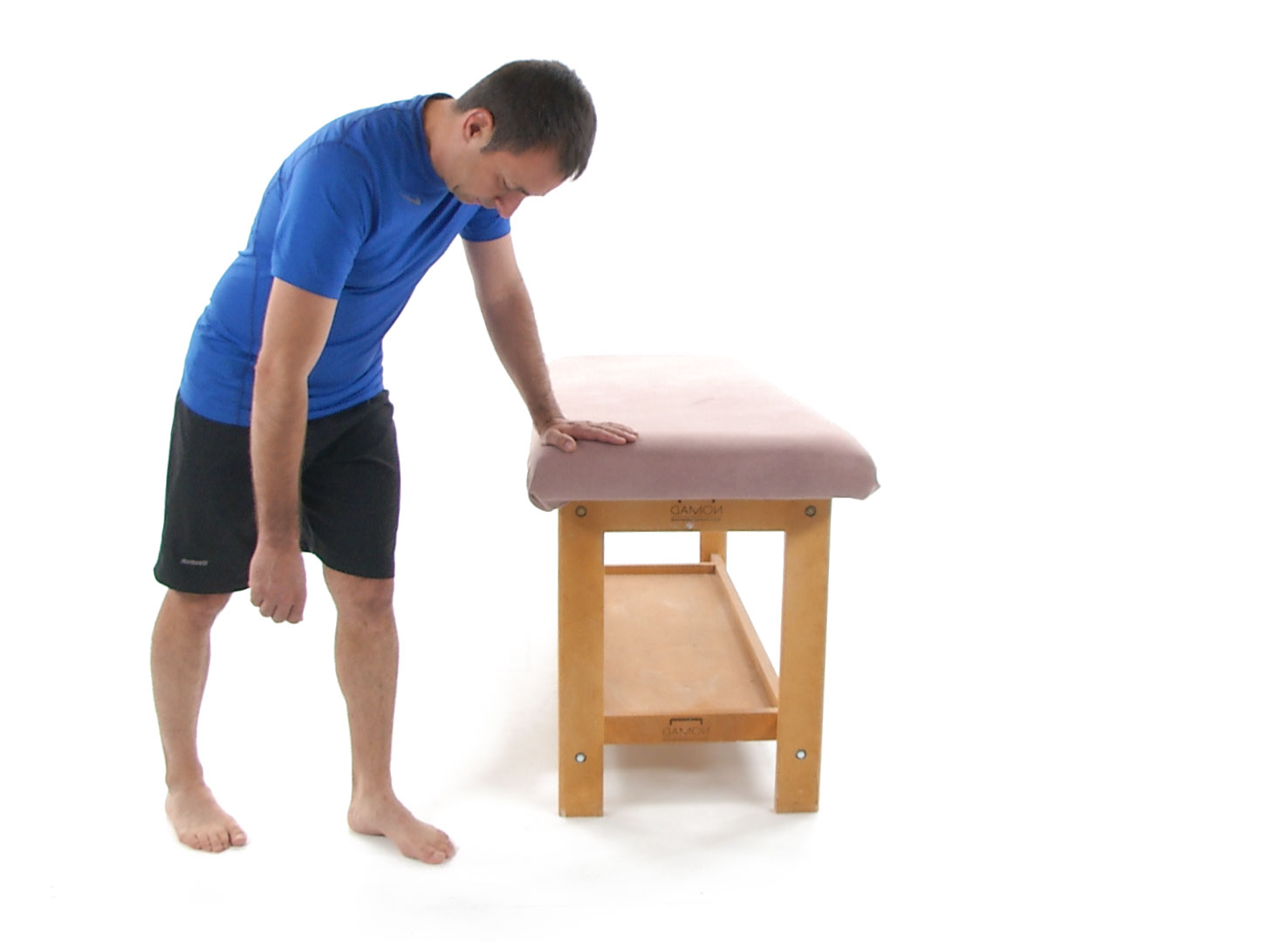
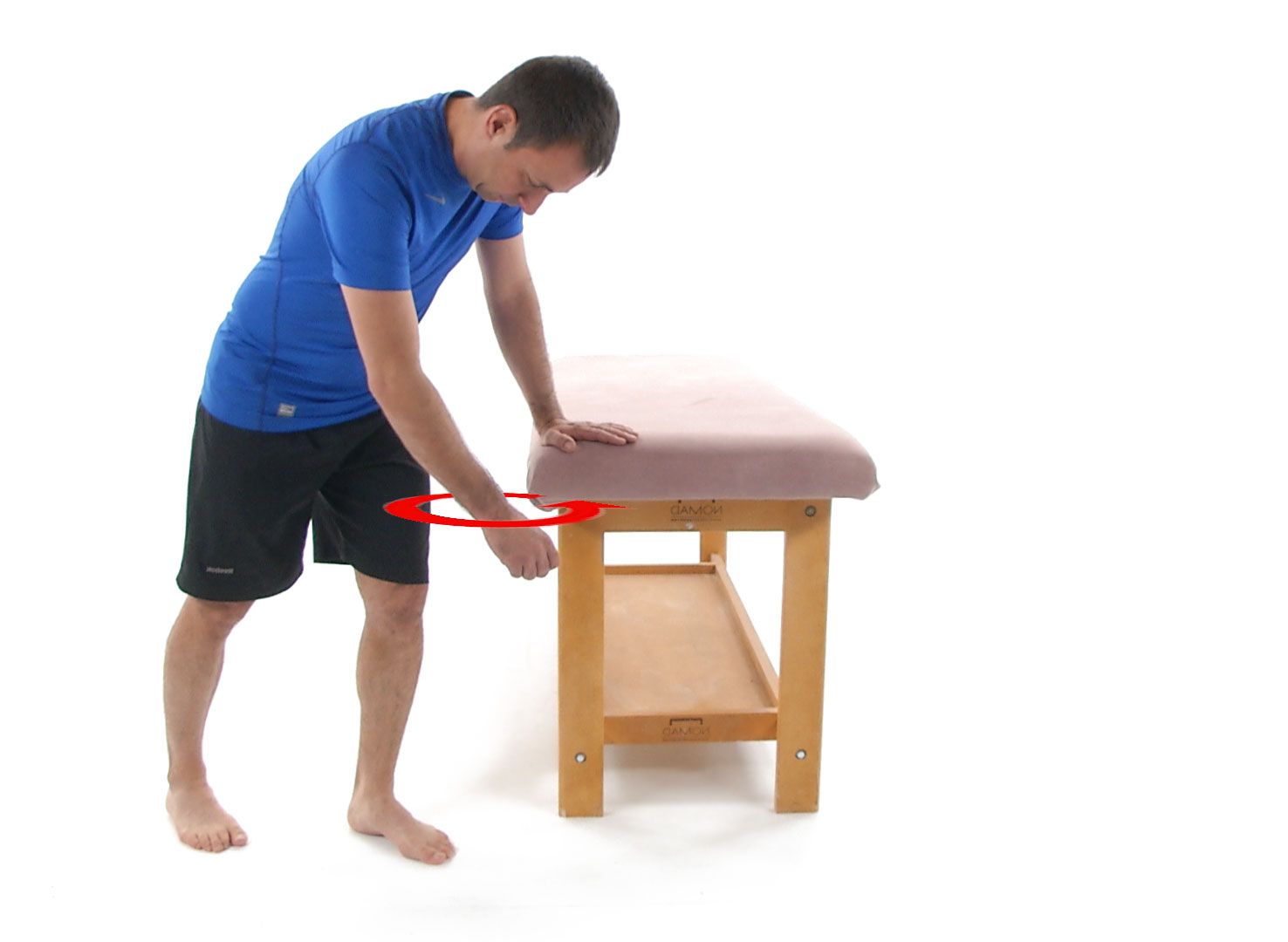
9. Pendulum with dumbbell
Place one hand on a support (table or countertop) with your trunk bent forward, and the involved arm hanging and holding a light dumbbell in your hand.
Using your body to assist the movement, draw circles with your arm in one direction or the other.
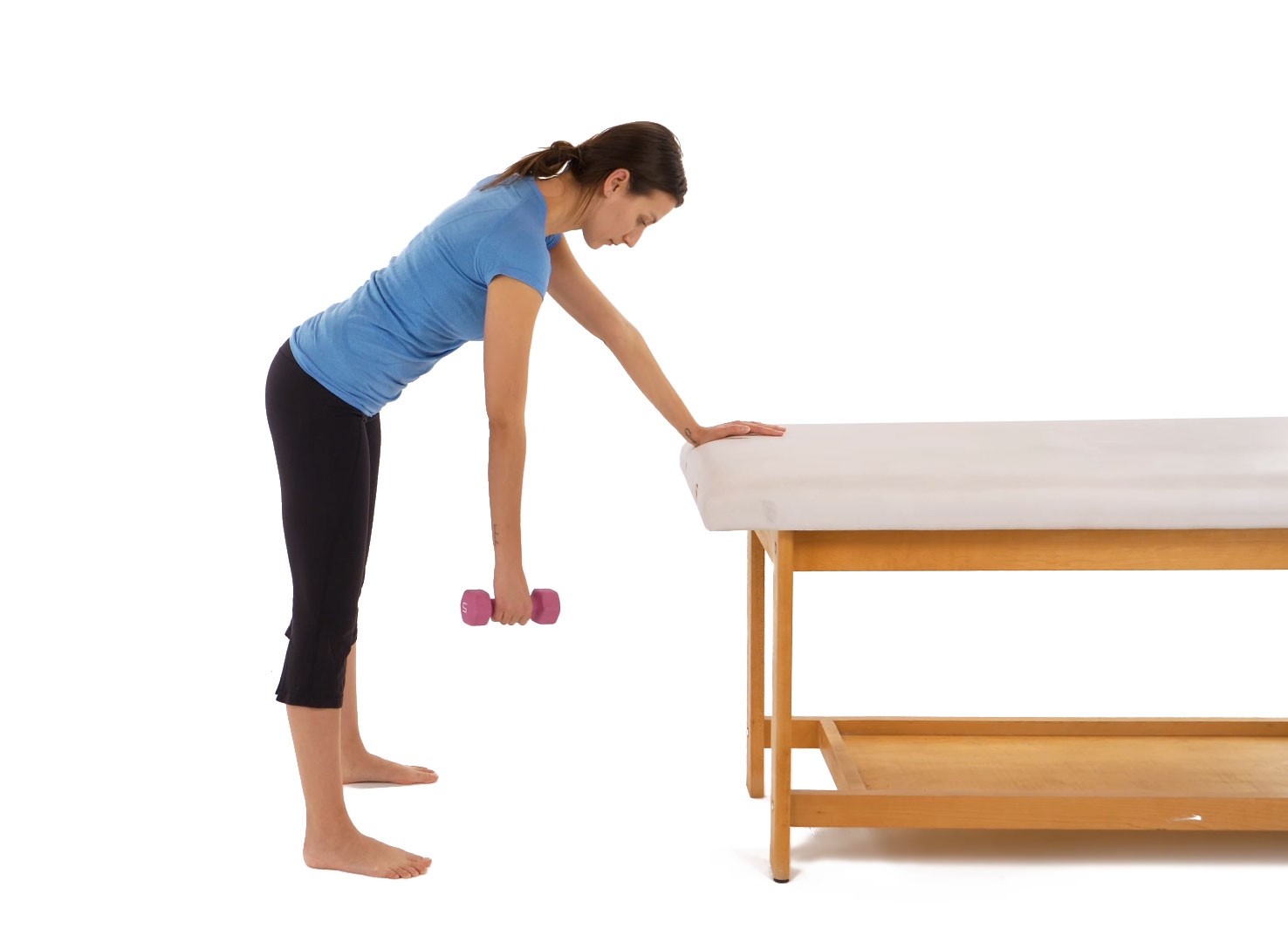
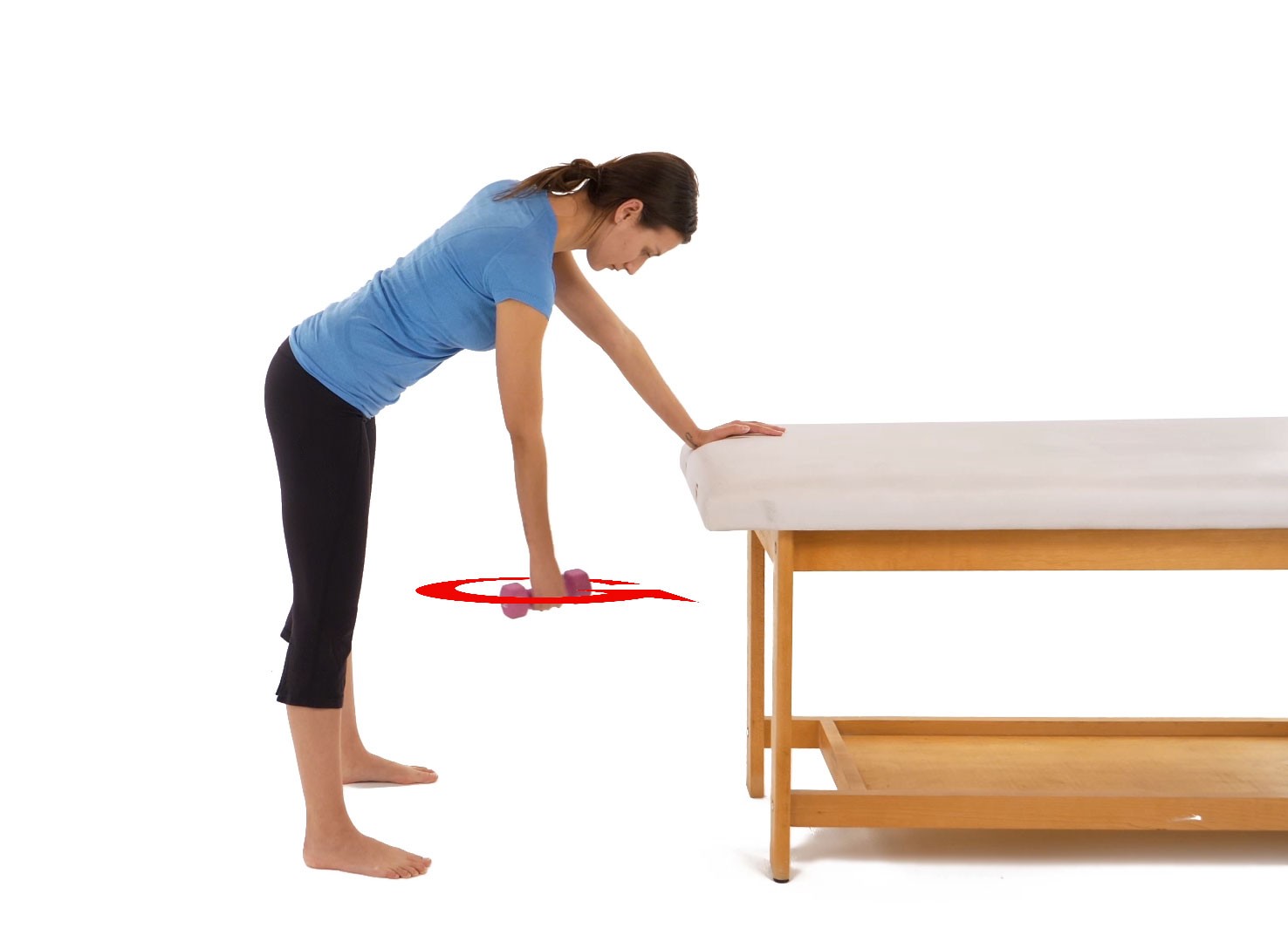
Shoulder Exercises (RCRSP Mid stage)
1. Full shoulder flexion (mini-band)
Put the band around your wrists with your elbows extended and arms by your side.
Put a minimal amount of pressure into the band and rotate your thumbs 45° out.
Maintaining the pressure, lift your arms all the way overhead.
Do not extend your spine or thrust your chin forward.
Lower the arms to come back to the starting position and repeat.
Reps 10, Sets 3, Rest 3 min


2. Strengthening supra-spinatus
Stand, pull the tip of your shoulder backward and turn your hand so your thumb is facing backward and your palm outward.
Raise your arm sideways to 90 degrees, keeping it straight.
Lower your arm slowly and repeat.
Reps 10, Sets 3, Rest 3 min
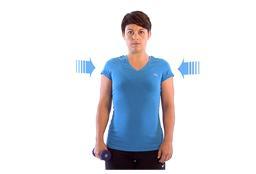
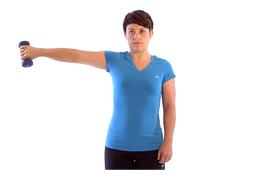
3. Empty can
Stand up with a band placed under your foot and held in your arm on the affected side.
With your arm turned so your thumb is facing down, lift your arm at shoulder height.
Lift in the scapular plane, in about 30-45 degrees forward from lifting completely sideways.
Lower in a controlled movement.
Reps 10, Sets 3, Rest 3 min
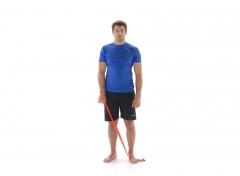
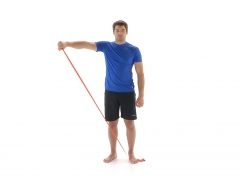
4. Side lying external rotation
Lie on your side with a weight in your top hand, elbow bent to 90 degrees.
Place a rolled towel between your arm and your side.
Rest your head on your free arm.
Externally rotate the arm to lift the weight up.
Keep your body still; do not turn the trunk to assist the movement.
Reps 10, Sets 3, Rest 3 min
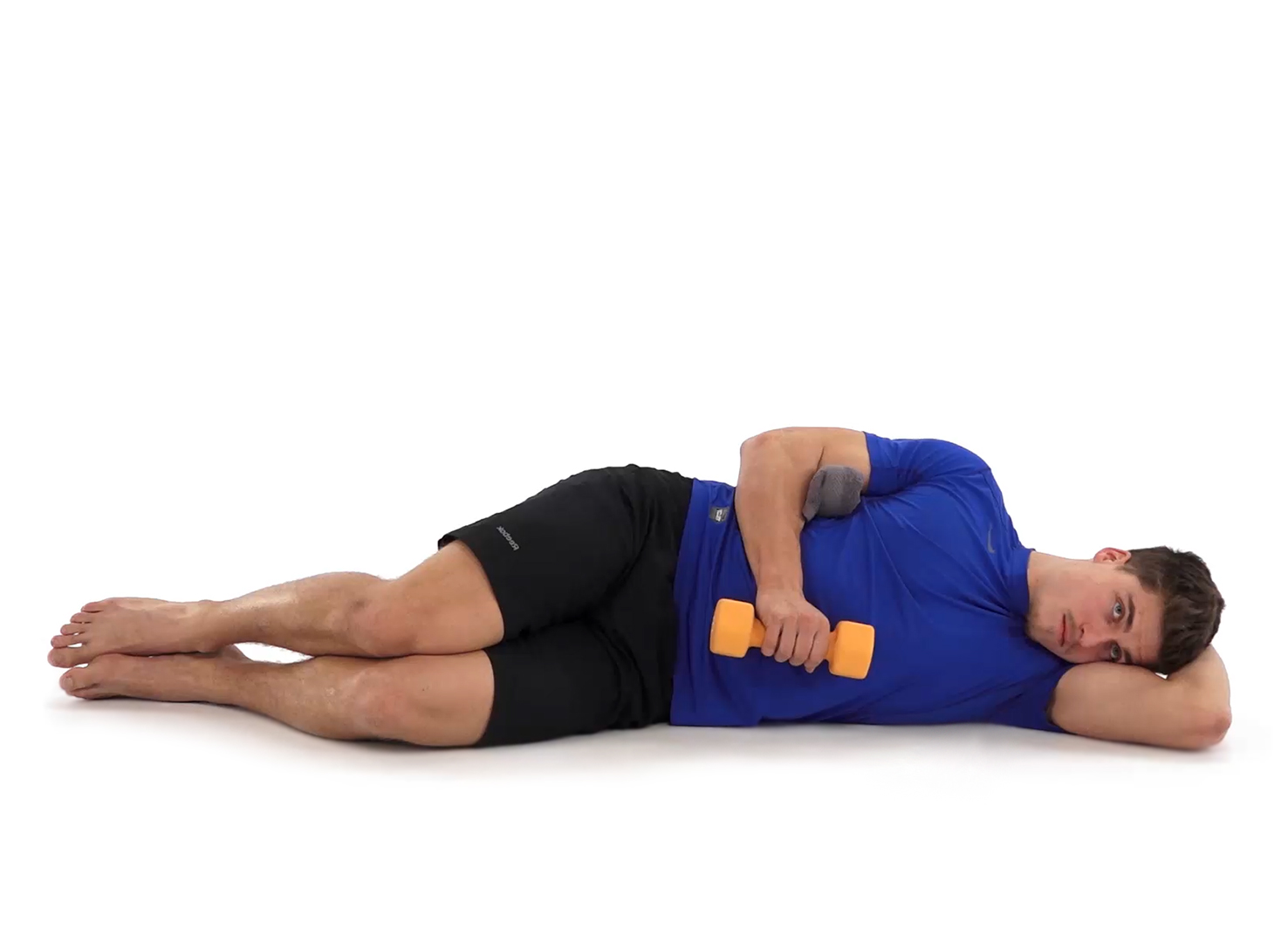
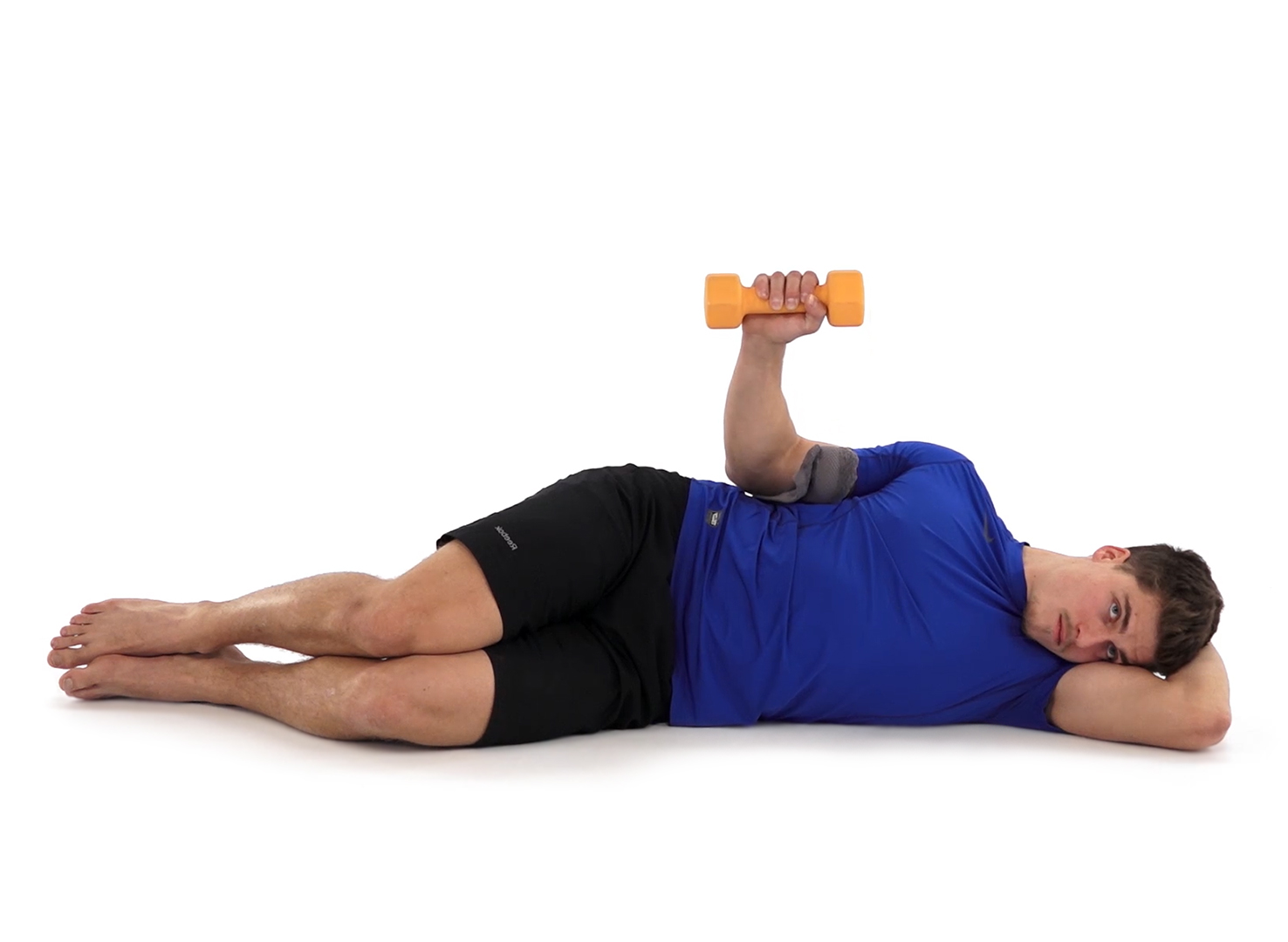
5. External rotation w/ elastic
Anchor a resistance band at elbow height at your side.
Tuck your chin and squeeze back/lower slightly the shoulder then externally rotate your arm out as much as you can against the resistance of the band
Make sure your elbow does not come away from your body.
Return and repeat.
Keep the elbow bent 90°.
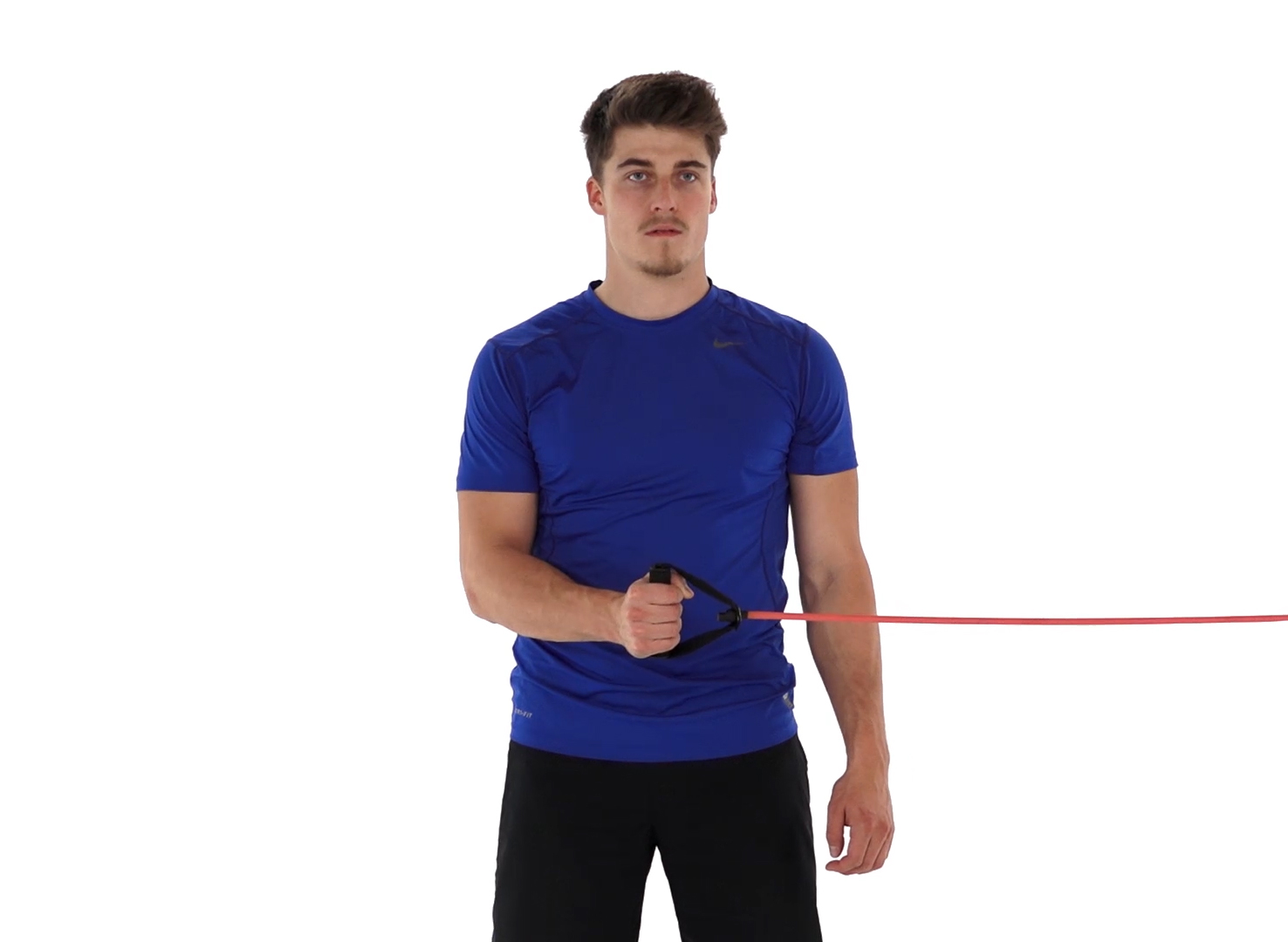
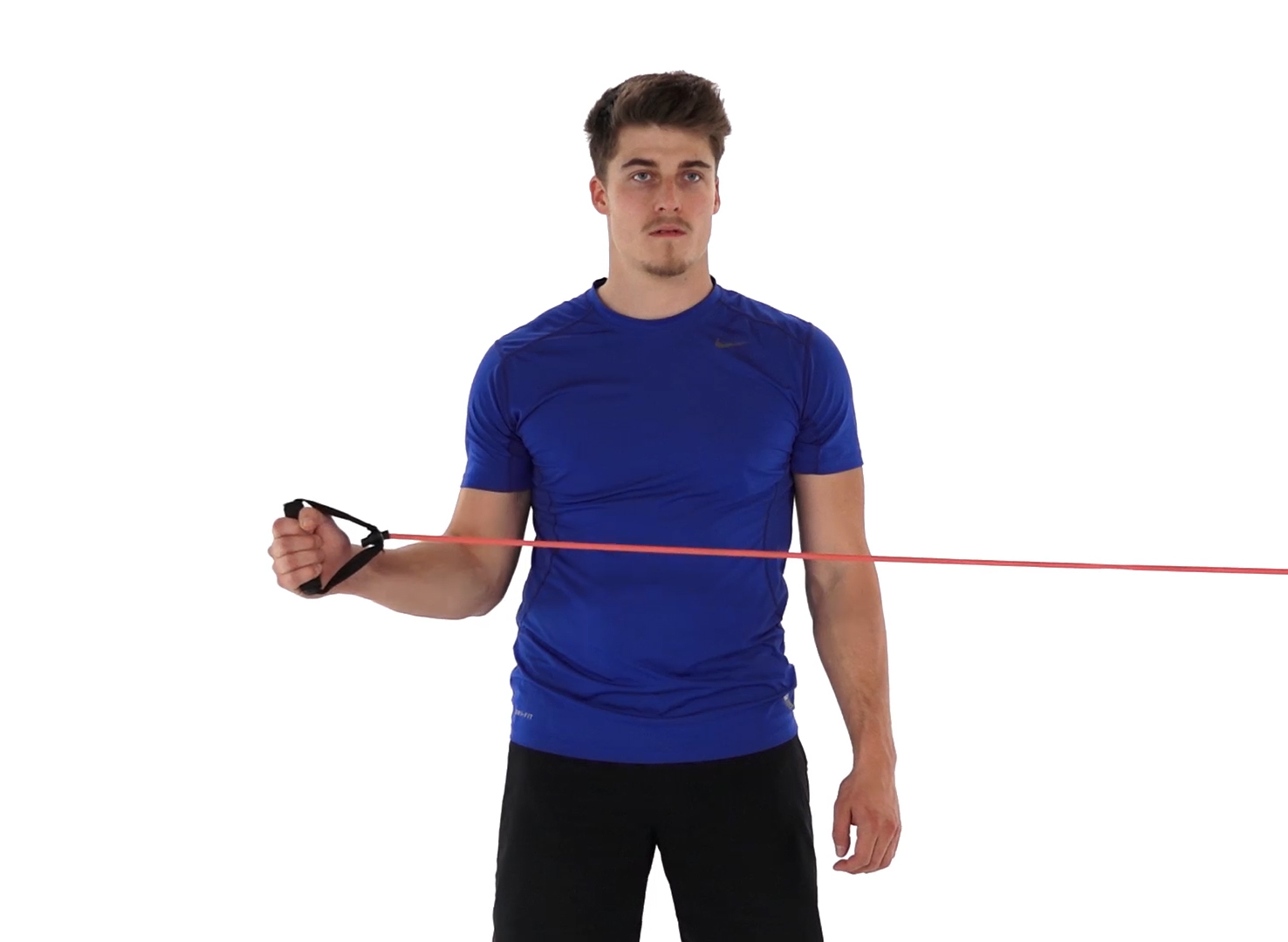
6. ER in scapular plane
Stand with the band anchored by the outside of your foot, on the unaffected side. With the elbow bent to 90 °, raise the elbow to the side of the body-at approximately 45 ° and in front of the body at approximately 30 °. Begin with the affected palm down, holding the band. Maintaining the shoulder and elbow position, and rotate the hand up. Slowly lower the hand to the starting position and repeat.
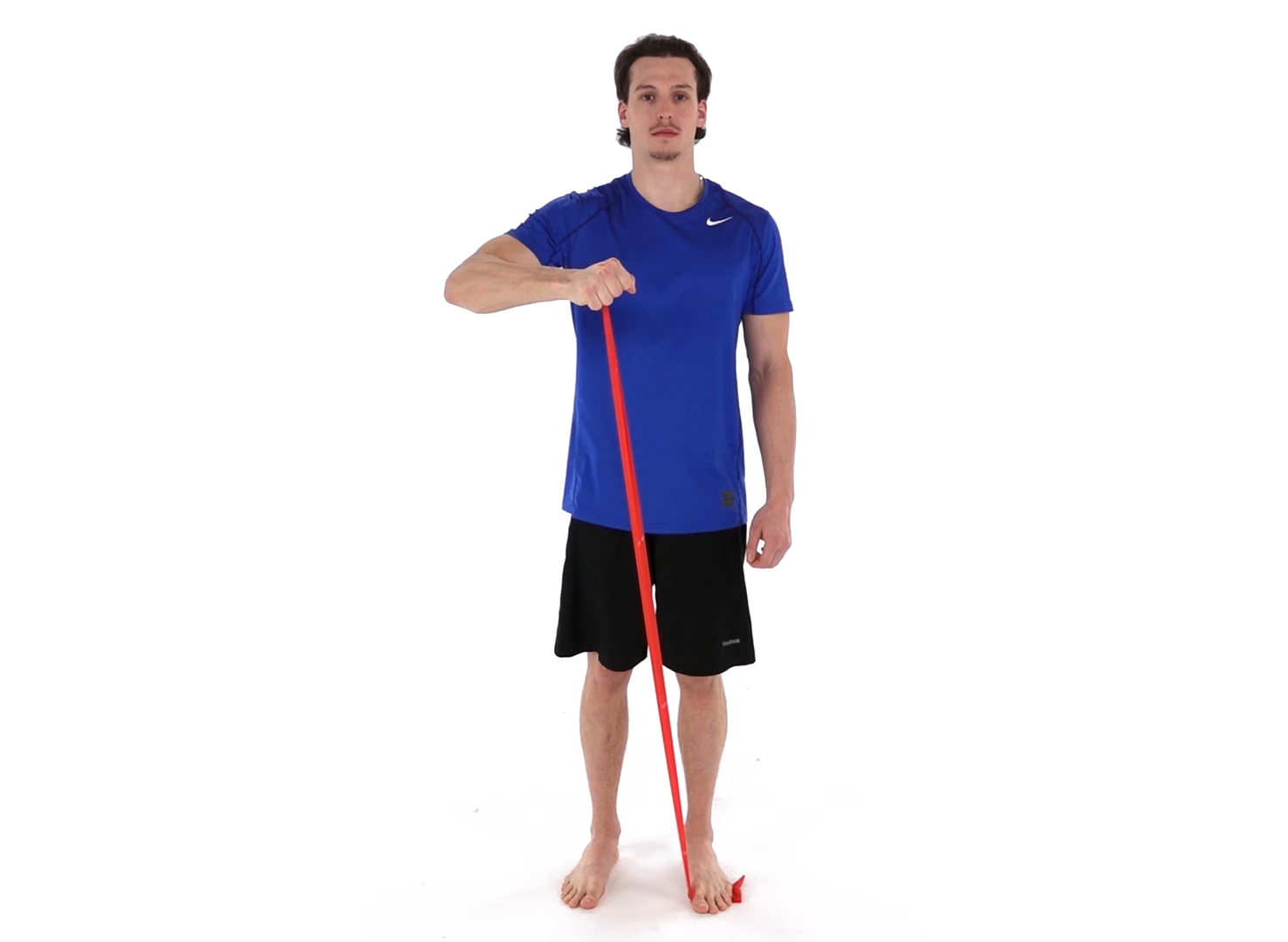
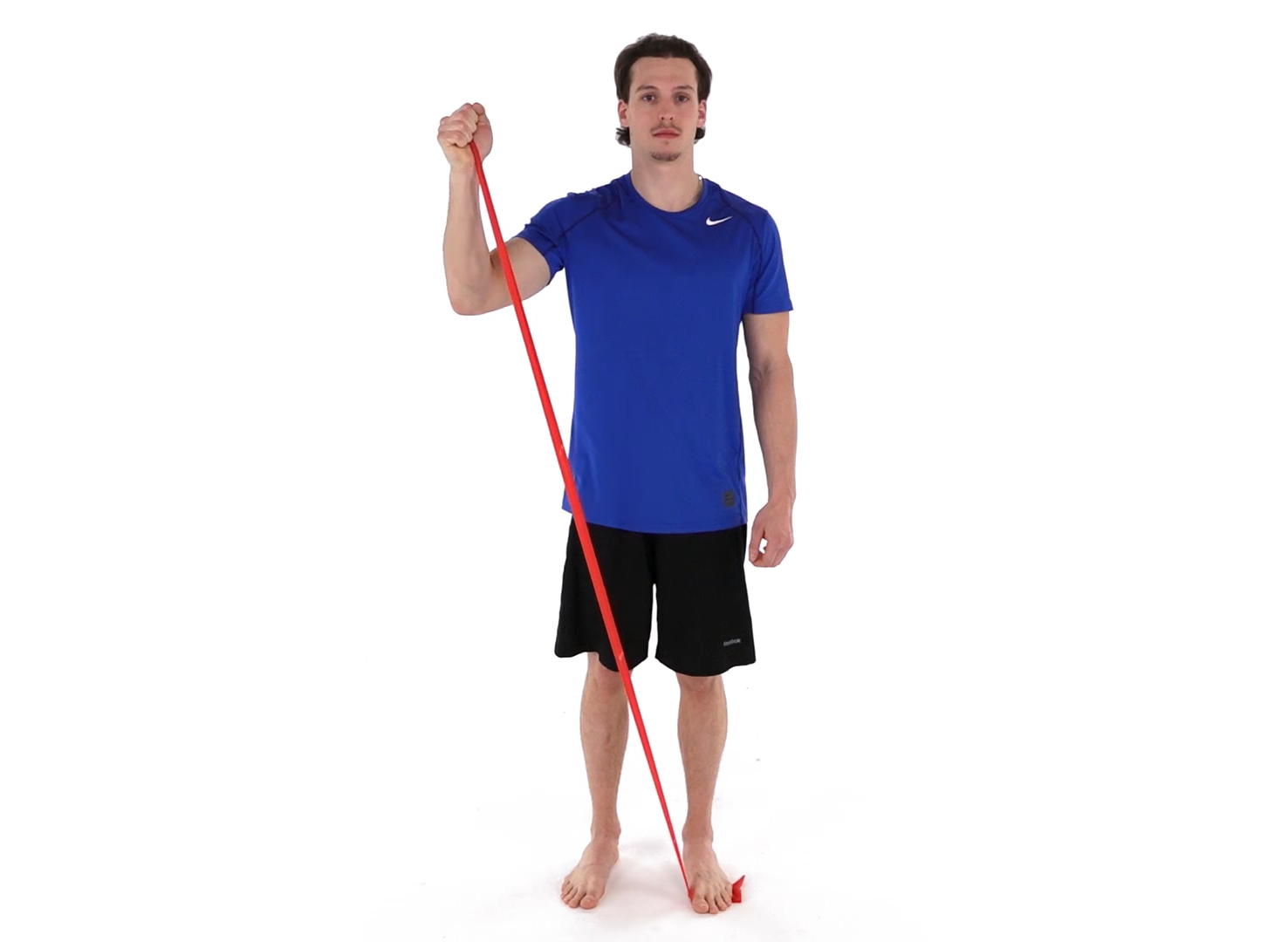
7. Shoulder internal rotation
Lie on the edge of a bed on your affected shoulder.
Put a small rolled towel under your head and keep your body straight. You can bend the knees for added stability.
With a weight in your hand, rotate the arm to bring the back of the hand toward the ground and then up.
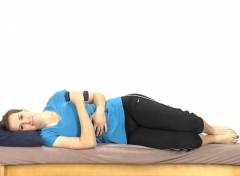
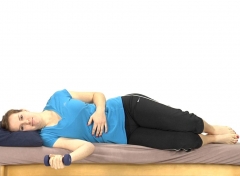
8. Shoulder internal rotation
Stand sideways in front of a closed door with a piece of tubing attached to it.
Bend your elbow closest to the door to 90 degrees.
Hold the elastic in your hand and pull it inwards by rotating the arm to bring the palm toward the stomach.
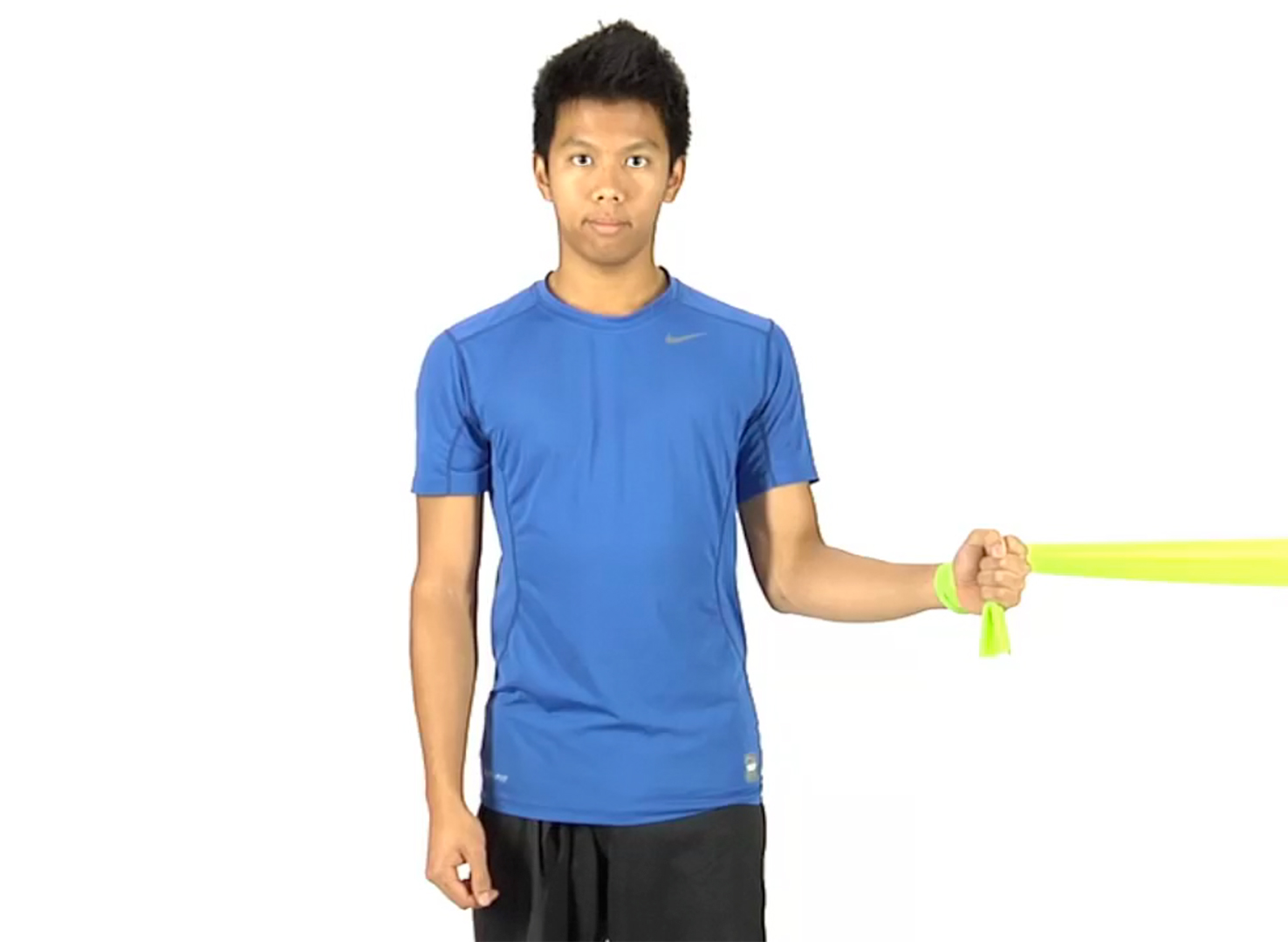
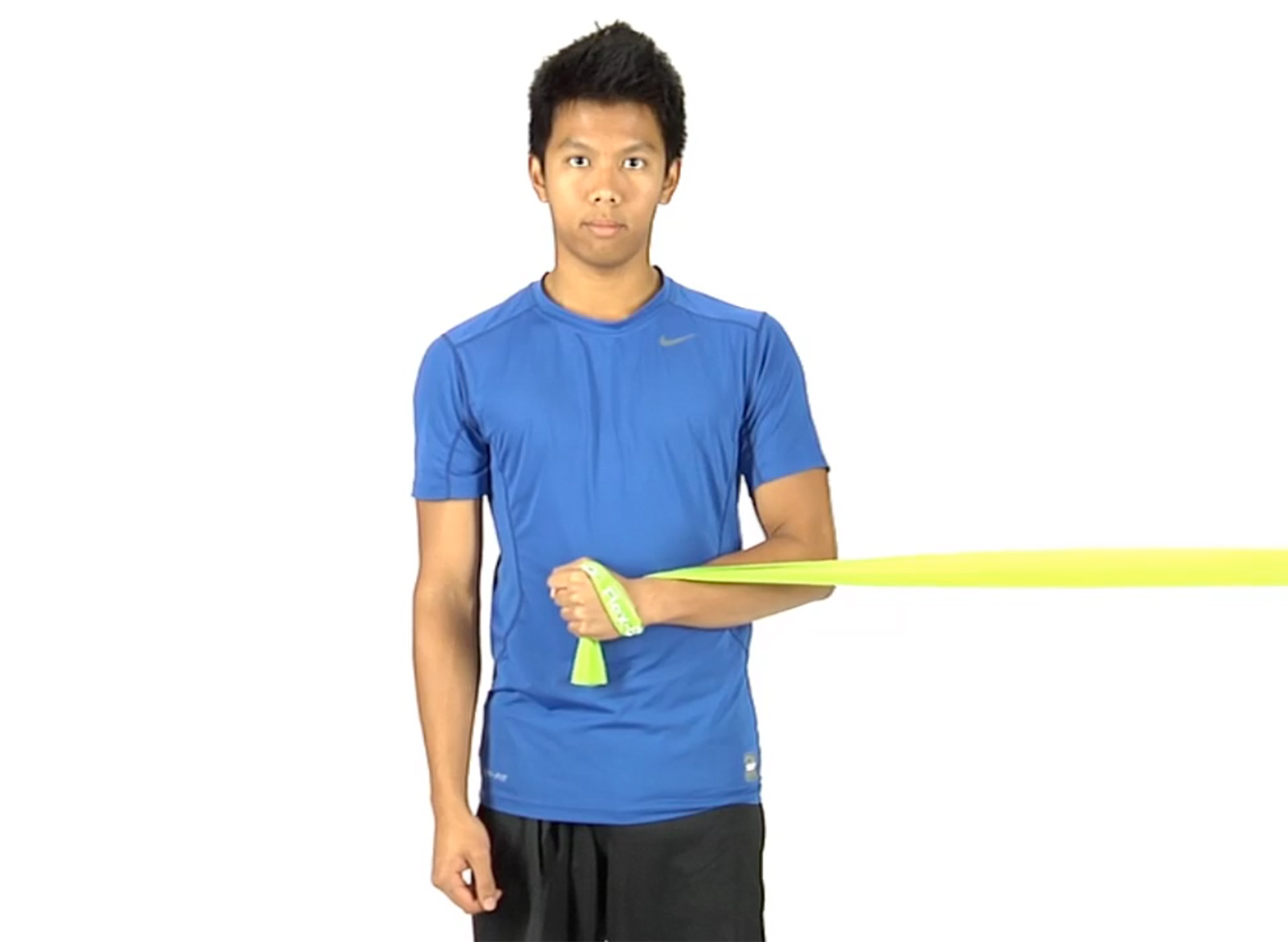
9. Shoulder internal rotation
Stand and tie an elastic behind you at head level.
Hold the end of the elastic, bend your elbow to 90 degrees and lift your arm out to the side to 45 degrees.
Pull the tip of your shoulder backwards while you rotate your forearm downward, keeping your elbow bent.
Slowly return to the initial position and repeat.
